INVESTMENT IDEAS FOR

8 KEY IDEAS TO ACHIEVE AFFLUENCE IN THE YEAR OF PROSPERITY

SINGAPORE’S 30 MOST INFLUENTIAL LAWYERS UNDER 40
SINGAPORE BUSINESS REVIEW’S INSURANCE RANKINGS SEES SLOW GROWTH AMONGST TOP 50
HOW TO STAY AHEAD OF SMES’ FINANCIAL NEEDS
SINGAPORE DIGS DEEP TO UNLEASH GEOTHERMAL ENERGY POTENTIAL
Issue No. 102 Singapore’s Best-Selling Business Magazine Display to March 31, 2023 S$5.90 Daily news at www.sbr.com.sg


Integrate data from any source, across all business systems, to create a single source of truth. www.jedox.com See the complete picture, quickly.
About Us
CIRCULATION: 18,000
ONLINE READERSHIP: 410,000 monthly unique clicks through Google Analytics
The SingaporeBusinessReview is the highest circulating and best read business magazine in Singapore. Our online readership has an average of 215,000 unique viewers, according to Google Analytics. We won the Business Trade Media of the Year Award at the 2017 MPAS Awards.
Do reach out to us if you would like us to tell your story to our readers via print and online advertising or events.
PUBLISHER & EDITOR-IN-CHIEF Tim Charlton

PRINT PRODUCTION EDITOR COMMERCIAL TEAM

COPY EDITOR PRODUCTION TEAM
FROM THE EDITOR
2023 is predicted to be a year of hope and prosperity. As we look forward to the abundant offerings of the New Year, we give you eight investment ideas from Singapore’s financial experts to achieve affluence in the Year of the Water Rabbit.
Jeline Acabo
Janine Ballesteros
Jenelle Samantila
Tessa Distor
Noreen Jazul
Consuelo Marquez
Djan Magbanua
Frances Gagua
Vann Villegas
GRAPHIC ARTIST Simon Engracial
ADVERTISING CONTACT Aileen Cruz aileen@charltonmediamail.com
Reiniela Hernandez reiniela@charltonmediamail.com
ADMINISTRATION ACCOUNTS DEPARTMENT accounts@charltonmediamail.com
ADVERTISING advertising@charltonmediamail.com EDITORIAL sbr@charltonmediamail.com
General Insurance Association of Singapore has collaborated with the police, insurers, and the Commercial Affairs Department to combat fraud using the Fraud Management System. Andrew Yeo, CEO of Income and GIA Management Committee Member and Insurance Fraud Committee Convenor walks us through the company’s new first line of defence to cover insurers’ blind spots on page 20.
Singapore’s roster of exceptional professionals has made the country an irreplaceable hub for businesses and high-profile individuals from around the world. This year, Singapore Business Review recognises the 30 most influential lawyers under 40 who have raised the bar for legal professionals across all fields. Meanwhile, general insurers and life insurers dominate the latest Top 50 Insurance Rankings. See the full list of esteemed lawyers and insurers on pages 34 and 40.
Read on and enjoy.
SINGAPORE
Charlton Media Group 101 Cecil St. #17-09 Tong Eng Building Singapore 069533 +65 3158 1386

HONG KONG
Charlton Media Group Hong Kong Ltd Room 1006, 10th Floor, 299QRC, 287-299 Queen’s Road Central, Sheung Wan, Hong Kong www.charltonmedia.com
PRINTING
Times Printers Private Limited 16 Tuas Ave 5 Singapore 639340
www.timesprinters.com
a member of Times Publishing Limited
Can we help?
Editorial Enquiries: If you have a story idea or press release, please email our news editor at sbr@charltonmediamail.com. To send a personal message to the editor, include the word “Tim” in the subject line.
Media Partnerships: Please email sbr@charltonmediamail.com with “Partnership” in the subject line.
Subscriptions: Please email subscriptions@charltonmedia.com.
SingaporeBusinessReview is published by Charlton Media Group. All editorial materials are covered by copyright and may not be reproduced without consent. Contributions are invited but copies of all work should be kept as Singapore Business Review can accept no responsibility for loss. We will, however, take the gains.
Sold on newsstands in Singapore, Malaysia, Hong Kong, London, and New York. Also out in sbr.com.sg with an online readership of 215,000 monthly unique visitors*.
*Source: Google Analytics
Tim Charlton
Singapore Business Review is available at the airport lounges or onboard the following airlines:
Singapore Business Review is available at the following clubs and hotels:
American Club
Hollandse Club
Laguna National Orchid Country Club
Raffles Country Club
Raffles Town Club
RSYC

Seletar Club
Sentosa Golf Club
Singapore Cricket Club
Singapore Island Country Club
Swiss Club
The Tanglin Club
The China Club
The Legends Fort
Canning Park
The Pines Club
Tower Club Singapore
Fullerton Hotel
Grand Plaza Park
Royal Hotel InterContinental
Le Meridien Orchard
New Park Hotel
Pan Pacific Raffles Hotel
The Hilton
The Regent Singapore
The Ritz Carlton
The Swiss Hotel
Stamford
Traders Hotel
Singapore
Darby Park
And at 16 serviced
residences
SINGAPORE BUSINESS REVIEW | Q1 2023 1
**If you’re reading the small print you may be missing the big picture




CONTENTS SINGAPORE BUSINESS REVIEW | MARCH 2018 Published Quarterly by Charlton Media Group 101 Cecil St. #17-09 Tong Eng Building Singapore 069533 For the latest business news from Singapore visit the website www.sbr.com.sg FIRST BRIEFINGS INDUSTRY INSIGHT INTERVIEW STARTUP RANKINGS LUMINARIES 28 COVER STORY 8 INVESTMENT IDEAS TO ACHIEVE AFFLUENCE IN THE YEAR OF PROSPERITY ANALYSIS SINGAPORE DIGS DEEP TO UNLEASH GEOTHERMAL ENERGY POTENTIAL 26 08 Singapore Budget 2023 to adopt fivepronged approach: analyst 09 Leasing conditions for Singapore REITs to soften in 2023 10 Tighter policy needed to keep inflation in check 11 Triple trouble: Singapore HDB rental market to face three key challenges 18 ONE Pass to rule them all: New work pass offers foreign workers longer stays, and more 44 HDB sees price correction amidst record-high prices 46 Three factors driving Singaporean firms to invest in Japan’s real estate 20 GIA covers insurers’ fraud blind spots 24 How to stay ahead of SMEs’ financial needs 14 No more cafe hopping: This startup allows employees to work at MRT stations 15 PokeSpace invents a ‘GoogleMapslike’ parking app for EV owners 40 Singapore Business Review’s Insurance Rankings sees slow growth amongst top 50 34 30 most influential lawyers under 40 SPACE WATCH 16 New 260-sqm command centre enhances security services with advanced technology 32 INDUSTRY INSIGHTS LAWYER TURNOVER PUSHES FIRMS TO REASSESS RETENTION STRATEGIES
Fresh & Fast
For RedMart, Singapore’s largest online grocery retailer, order fulfilment speed, reliability, accuracy, and productivity are key in delivering on customer promises, especially during the pandemic, when online visitors increased 11-fold.

Optimising capabilities through leading-edge logistics automation from Dematic, RedMart’s online fulfilment centre features robotic shuttles, ergonomic pick stations, intelligent conveying, and high-rate despatch sortation – all across five temperature zones and managed by sophisticated software, making grocery fulfilment easy, accurate, efficient and safe.
Read more and see it in action at www.dematic.com/redmart


the orders,
the SKUsin a smaller footprint. Online Groceries
Dematic.com/redmart
10 times
5 times
info.asia@dematic.com Scan to watch the video!
+65 6229 4500
Daily news from Singapore

MOST READ
Singapore’s most outstanding architecture professionals under 40
As the world continues to be battered by environmental and health challenges, Singapore’s architecture professionals also moved to create spaces which can withstand these obstacles. This year, SingaporeBusinessReview recognises 20 young and awardwinning architecture professionals under 40 who contributed to keeping Singapore as one of the world’s best-developed cities.
MOST READ COMMENTARY
Setting the foundation for success in the commercial real estate sector in Singapore



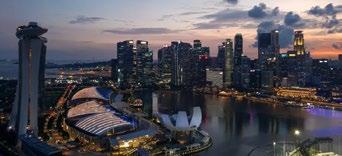
 BY Michael Velten and Junwei Han
BY Michael Velten and Junwei Han
Across Singapore, every industry has experienced fundamental transformation in the last two years – and the commercial real estate sector (CRE) is no exception. Increasingly, the real value of property will no longer be defined solely by the space and its location, but the convergence of infrastructure and technologyenabled real estate service models.
Singapore’s most notable real estate agents under 40

Singapore’s status as a safe haven for property investors remained intact amidst global headwinds, thanks to the city’s realtors who were determined to push the city to a holistic recovery in 2022. In recognition of their hard work, SingaporeBusinessReview listed down 20 realtors under 40 who not only thrived in managing clients and negotiating deals but also displayed leadership in their respective communities amidst challenging times.
What it means for Singapore now that the electric vehicle charging bill has been passed in parliament?
BY Abhijit Sengupta
The newly tabled Electric Vehicle (EV) Charging Bill in Parliament is a muchwelcome step in the right direction as mobility in Singapore continues to evolve. By ensuring the reliability and accessibility of the EV charging network and services in Singapore, we’re already advancing the conversation on EV adoption – from increasing the number of EV charging points to discussing the quality of such infrastructure.
How realtors dealt with the new realities of the real estate market
Apart from client demands, real estate agents in Singapore also had to deal with changes in the real estate industry, which include the market being more driven by global challenges like inflation, rising interest rates, and the pandemic. To keep up with the new realities, ERA Realty’s Division Director, Jazreel Lim said she had to change her mindset and the way she approached her clients.
Adapt to survive in 2023: A step guide for business models in fintech
BY Pat Patel
The origins of FinTech date back to the Global Financial Crisis of 2007 to 2008, when financial institutions suffered large losses and needed government assistance to survive. In the same period, mobile technology exponentially grew, which further yielded a new breed of financial institutions. Web 2.0 created opportunities for FinTech companies through leveraging mobile, social and cloud.
News
sbr.com.sg
from
REAL ESTATE REAL ESTATE REAL
ESTATE

OPPORTUNITIES
DOCUSIGN
DocuSign helps organizations connect and automate how they prepare, sign, act on and manage agreements. As part of the DocuSign Agreement Cloud, DocuSign offers eSignature, the world’s #1 way to sign electronically on practically any device, from almost anywhere, at any time.
Today, over a million customers and more than a billion users in over 180 countries use the DocuSign Agreement Cloud to accelerate the process of doing business and simplify people’s lives.
NORDVPN OPPORTUNITIES
NordVPN is the world’s most advanced VPN service provider, used by millions of internet users worldwide. NordVPN provides double VPN encryption, Onion Over VPN, and guarantees privacy with zero tracking. One of the key features of the product is Threat Protection, which blocks malicious websites, malware, trackers, and ads. NordVPN is very user-friendly, offers one of the best prices on the market, and has over 5,000 servers in 60 countries worldwide.

OPPORTUNITIES
S P JAIN SCHOOL OF GLOBAL MANAGEMENT
S P Jain School of Global Management (SP Jain) is an Australian business school with campuses in Mumbai, Dubai, Singapore and Sydney. The School offers a plethora of undergraduate, postgraduate, professional and doctoral programs with a motive of crafting leaders for the 21st century workplace. The learning experience provided by them is modern, relevant and truly global. Their full-time MBA programs have significant recognition as evinced through global rankings by Forbes, The Economist and The Financial Times to name a few.
To know more, please visit www.spjain.sg

6 SINGAPORE BUSINESS REVIEW | Q1 2023 visit charltonmedia.com FOR MORE INFORMATION on EVENTS AND ADVERTISING PEOPLE | PLACES | SERVICES | OPPORTUNITIES
AGENDA
Great is being prepared for all of life’s twists and turns.
Reach for Great financial expertise and award-winning financial tools.

Find the confidence you need to build a financially secure future with our award-winning financial management tool, the Financial Storyboard. With our tool and the expertise of our Financial Representatives, you can enjoy personalised data-driven insights and an interactive simulation of your various life goals and milestones. All to help you visualise your long-term financial needs and ensure you’re prepared for whatever life throws at you.
Talk to us today!

Copyright© 2022 Great Eastern Holdings Limited (Reg No 1999 03008M) Great Eastern Holdings Ltd | Great Eastern Life Assurance Co Ltd | Great Eastern General Insurance Ltd
@greateasternsg @greateasternsg
greateasternlife.com
@greateasternsingapore
Singapore Budget 2023 to adopt fivepronged approach: analyst
The government will likely address five areas of concern in the 2023 budget to ultimately achieve its goal of developing Singapore’s competitiveness and strengthening its social safety nets, RHB Senior Economist Barnabas Gan said.
In a report, Gan said the budget will focus on helping Singapore stay relevant and viable in tomorrow’s world, helping the vulnerable and lower-income, supporting businesses, developing a skilled workforce, and developing a sustainable and green Singapore.
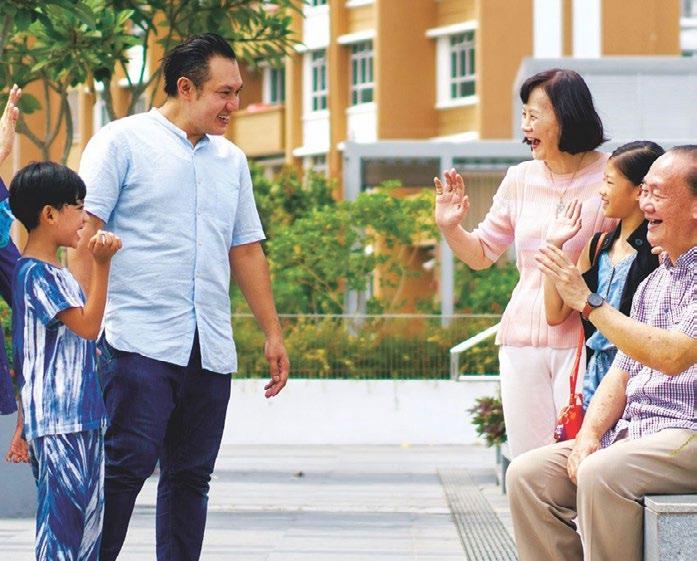
For Singapore to stay economically relevant and viable, Gan said the nation must invest in new capabilities and strengthen its digital capabilities. “With pandemic-related risks likely a thing of the past, we think the focus will be on building Singapore’s medium- to long-term priorities in technology, innovation and enterprise...We expect policymakers to earmark monies to invest in Singapore’s broadband infrastructure, especially for future technologies such as 6G,” Gan said.
To provide more support for vulnerable and lower-income groups, RHB said the government should make enhancements to the current Workfare Income Supplement (WIS), by tweaking the minimum wage of at least $500/month and/or maximum income cap of $2,500/month. “Supplementing
wages is also paramount, given that average inflation of 7.3% as of 3Q22 has surpassed wage growth of 7.1% over the same period. In addition, wage support may be introduced in response to the rise in hybrid work arrangements, as employees who adopted such work arrangements may see some form of ‘work from home’ relief in recognition that the burden of costs has shifted away from employers to employees,” Gan said.
“Separately, we do not discount the introduction of unemployment support for retrenched workers in FY2023. However, this should include specified prerequisites such as a minimum period of full-time work before retrenchment, property ownership below a specific annual value and showing efforts to seek re-employment after retrenchment,” he added. The budget will also likely be geared towards supporting SMEs, said Gan, given that they account for 99% of all enterprises and employ 72% of Singapore’s workforce.
“Support for businesses may also include introducing aid for SMEs in defraying the added costs of the hybrid working
arrangement adopted across most companies, should there be a rise in ‘Work-from-home’ relief for employees in adopting such work arrangements. Elsewhere, tax incentives may also be introduced for industries in need of foreign talents, such as in the biomedical sciences, financial services and digital technology-related sectors, for these industries recruit and retain talent,” Gan said.
Whilst Singapore’s labour force remains relatively tight, Gan said “ the issue of structural unemployment remains on the table as we move into a more digitalised global economy.”
“There is a need for Singapore to invest in the lifelong learning of its workforce, especially the midcareer workers, in the skills and capabilities relevant to the evolving business needs. We think some enhancement to the Workfare Skills Support (WSS) scheme will allow more inclusivity amongst low-wage workers and encourage them to undertake training. The enhancement may be from increasing the income cap of the current S$2,300 per month and topping up more training allowance beyond the current stipulated S$6 per hour, given the higher cost of living,” Gan commented.
“We also think a SkillsFuture top-up is due, especially since the last top-up was made in December 2020,” he added.
Green Singapore
The last area of focus for the budget will likely be on “enabling a sustainable and green Singapore.” Beyond carbon taxes, Gan said the government must create policies that encourage corporate investments in green technologies.
“We expect the policymakers to introduce allowances on capital expenditure incurred respectively to energy efficiency and emissions reduction solutions. Moreover, GST rebates and/or vouchers may also be considered for individuals and households to purchase certified energies from providers and subsidise purchases on energy-efficient appliances,” he said.
“Separately, we think that an extension of the Sustainable Bond Grant Scheme beyond the current validity of 31 May 2023 may materialise. The extension will encourage the issuance of green, social and sustainability bonds, thus helping issuers cover additional costs associated with the green initiative,” the RHB senior economist added.
8 SINGAPORE BUSINESS REVIEW | Q1 2023 FIRST
To provide more support for vulnerable and lower-income groups, the gov’t should make enhancements to the current Workfare Income Supplement (Photo from MOF.gov.sg)
ECONOMY
With pandemic-related risks likely a thing of the past, the focus will be on building Singapore’s medium- to longterm priorities in technology, innovation, and enterprise
Leasing conditions for Singapore REITs to soften in 2023
COMMERCIAL PROPERTY
Experts at S&P Global Ratings are expecting a slowdown in the rental growth momentum of leases of Singapore REITs.
The slowdown will be more pronounced in office leases, said S&P Global Ratings credit analyst Hwee Yee Ong in a recent report.


Ong said Macroeconomic softening could temper business confidence this year which, in turn, will weigh on office demand.
“Firms may cut their real estate footprint or hold off on leasing decisions, particularly as hybrid work practices remain common,” the S&P Global analyst said.
The expert added that the waning leasing demand from the technology sector will particularly weigh on the office sector.

“Technology firms globally are entering a phase of heavy retrenchments. Singapore has not been spared. Over 1,000 employees in the Singapore technology sector were made redundant from July to mid-November 2022, according to the Minister for Manpower, Tan See Leng. This is almost five times the number of retrenchments during the first half of 2022,” she said.
“Technology firms have been one of the key drivers of leasing demand
in recent years. As the entities give up or sublet offices, shadow space - floor area that is leased but not utilised - could increase,” the S&P Global analyst added.
Ong, however, underscored that it is not all gloom for the Singapore office sector, saying that the flightto-quality trend will benefit prime offices. “Other sectors, such as nonbank financial institutions, professional services, and flexiblespace operators may absorb some of the space that is becoming available,” she said.
Unlike the office sector, Ong said the retail sector will continue its stable performance in 2023, underpinned by consumption growth and limited supply. “A post-pandemic boom in inbound tourism will bolster retailers’ confidence across downtown malls,” said the S&P analyst.
The Singapore Tourism Board forecasts international visitor arrivals to reach around 12 million-14 million in 2023, which is about 60%-75% of 2019’s arrivals but about double that of 2022. “We expect suburban malls to remain relatively resilient. Their high exposure to non-discretionary spending and proximity to residential hubs should continue to add stability,’’ S&P analyst, Simon Wong, said.
S&P added that the limited pipeline for shopping malls supports a healthy vacancy rate and rental growth in the market.
SHIFT TO DIGITAL INITIATIVES AND CUSTOMISATION TO DRIVE GROWTH FOR SINGAPORE INSURERS
The shift towards digital initiatives and customisation will drive continued revenue growth for Singapore insurers, Manogna Vangari, Insurance Analyst at GlobalData, said.
“Prompt scaling of technology and increased adoption of digitalisation enabled insurers to create new opportunities and improve customer experience,” Vangari said.
“To build a resilient business, Singapore insurers strengthened their distribution channels by adding digital tools to their core channels like agencies, financial advisers, and bancassurance,” she added.

The positive environment created by easing COVID-19 restrictions and a recovery in global economic activity to pre-pandemic levels has enabled top insurers in the country to improve their offerings. Singaporean insurers have also focused on customisation to provide support for their customers following the pandemic.
For example, NTUC Income Insurance launched low-cost subscription-based customised insurance policies in July 2021.
“These short-term policies offer modular packs which allow customers to customise, and the low-cost pocket-friendly policies also provided flexibility to modify coverage or add-on options based on changes in customers’ lifestyle,” Vangari said.
The market share of the top five and top 10 insurers increased by 3.2 percentage points and 0.6 percentage points, respectively, in 2021 compared to 2020, according to GlobalData’s report.
Great Eastern Life Assurance continues to lead the Singaporean insurance industry with a market share of 25.7% in 2021, while Manulife jumped up from the fourth position in 2017 to the second largest insurer in 2021.
Prudential Assurance slipped to the third spot from the second position in 2017.
SINGAPORE BUSINESS REVIEW | Q1 2023 9 FIRST
The waning leasing demand from the technology sector will particularly weigh on the office sector
As entities give up or sublet offices, shadow space could increase
Hwee Yee Ong
Simon Wong
SG IS WELL-POSITIONED FOR INDUSTRIAL SPACE OCCUPIERS

Aproperty expert said Singapore remains attractive for occupiers of industrial spaces even as there is a softening global demand and an expected economic slowdown in the market.
Tricia Song, head of research at CBRE, said life science firms expanding their presence are driving demand for industrial property in Singapore.
Song was commenting on JTC’s industrial rental index which went up by 2.1% in the final quarter of 2022. This maintained the same pace of increase from the previous quarter, resulting in a 2022 rental increase of 6.9%.
“As for the warehouse segment, an acute shortage of quality space and high levels of pre-commitments at upcoming buildings should lead to further rental increases in the near-term,” said Song.

Whilst there is over 18.9 mil sq. ft. of new industrial space (or around 3.5% of total stock) to be completed in 2023, about half are single-user factories and only 28% are warehouses.
Singapore also posted a full-year warehouse rental growth to 7.9%, an acceleration from 2021’s 2.7% which is possibly due to the sustained demand for logistics space despite easing of pandemic.
Industrial prices stay stable
Even as upcoming industrial supply comes in a time of subdued manufacturing sector, Knight Frank said the Lion City will attract fixed asset investment into the manufacturing industry.
Despite challenges faced by the electronics sector, investments continue to flow into Singapore with the belief that growth will return and be sustainable in the long-run.
These factors will result in stabilising of industrial prices and rents, with a marginal growth of 1% to 3% for the whole year.
Tighter policy needed to keep inflation in check
ECONOMY
Brokers suggested that Singapore’s central bank should continue to tighten monetary policy if core inflation shows signs of reacceleration.
Singapore’s headline inflation went down 6.5% in December 2022 but core inflation was at 5.1%.
UOB senior economist Alvin Liew said sources of core inflationary pressures were broad-based, but food and services and healthcare stood out as notable contributors. Core inflation is seen to stay elevated in the first half of 2023 but will stay subdued in the second half as domestic labour market eases and global inflation moderates, said UOB.
RHB senior economist Barnabas Gan said the inflation risks and potential for more tightening of monetary policy of MAS in 2023.

It said momentum of inflation has slowed in Singapore and other key Asian economies, but that year-on-year rates remain elevated.
To address these challenges, the UOB and RHB analysts said there needs to be more policy tightening, due to reasons such as core inflation will be above 2.0%, a stronger Singapore dollar, and potential risks from global
geopolitical tensions and pandemics.
“With the MAS pulling only one lever in its last decision in Oct (2022), we think there is still room for further tightening into 2023, especially if core inflation shows signs of meaningful re-acceleration in the months ahead,” said UOB.
Import and domestic price pressures
When the CPI report showed that supply chain frictions continued to ease, prices of energy and food commodities reached the peak from earlier in 2022 but are still elevated.

The central bank adjusted its warning that “as accumulated costs pass through global value chains,Singapore’s imported inflation is expected to remain firm for some time.”
Domestically, the MAS said unit labour costs are projected to increase further in the near term along with robust wage growth.
Car and accommodation prices will likely stay firm in the quarters amidst tight certificate of entitlement quotas for cars and strong demand for rental housing. Authorities also project that businesses will pass through accumulated import, labour, and other costs to consumer prices. UOB said these expectations are similar to the November report.
Policy tightening remains unchanged
The further tightening of monetary policy for April 2023 will remain unchanged, RHB said.
It mentioned three key reasons behind its statement which is first, the core inflation is expected to persist above 2% handle from now until the first six months of 2023 before dissipating lower then.
This means there is a need for monetary policy response to stay pre-emptive in anchoring inflation projections, RHB said.
Second, RHB said their Singapore Dollar Nominal Effective Exchange Rate (S$NEER) model suggests that the S$NEER maintained above the midpoint seen since 2021 and was resilient around 6.5% all over 2022.
“Notwithstanding that relative weakness in the SGD NEER at the time of writing (S$NEER is estimated at 0.66% above midpoint, against 1.0% in 4Q22), we think more appreciation headroom may be needed for a stronger SGD in response to the current inflation environment,” said RHB.
10 SINGAPORE BUSINESS REVIEW | Q1 2023 FIRST
Core inflation is seen to stay elevated in the first half of 2023
COMMERCIAL
PROPERTY
Alvin Liew
Barnabas Gan
Triple trouble: Singapore HDB rental market to face three key challenges

Asupply crunch looms in Singapore’s HDB rental market in the next few years. According to OrangeTee’s Senior Vice President of Research & Analytics, Christine Sun, the HDB rental market may face a triple whammy.
First, new home supply will fall as the number of Minimum Occupation Period (MOP) flats continue to decline.
Sun said flats obtaining their five-year MOP
are slated to drop significantly from 31,325 units in 2022 to 15,748 units in 2023; dipping further to 13,093 units in 2024 and 8,234 units in 2025.
Second, rental stock will shrink in the long term as tenants sign longer leases.
Third, fewer flat owners may put up their units for lease.
“More families may stay put in their units since their upgrading opportunities could
Built for Innovation, Trusted for Security





Trusted by thousands of organisations to secure and manage their digital asset operations.

be affected by the new cooling measures. For instance, some HDB upgraders may take longer to find suitable buyers since the purchasing power of potential buyers may be affected by tighter borrowing limits,” Ong said.
“Sellers’ flats may not fetch as high a price as before the measures. With interest rate hikes and prices of private homes not expected to fall anytime soon, fewer people may purchase a private property for owner-occupation and lease their flats for rental income, resulting in fewer flats put up for lease,” she added.

In 2023, Ong predicts that rental price growth will slow, and leasing volume will slip slighty. “We expect HDB rents to rise at a slower pace of around 15 to 18 per cent next year, down from the estimated 26 to 28 per cent for 2022. Rental volume is expected to be robust as flats will continue to be an affordable, entry-level housing option for many tenants. Bigger flats may be in demand among local families and foreigners with tight budgets,” Sun said.
“Private homeowners affected by the 15-month wait-out period before they purchase a resale flat may turn to the HDB rental market for their interim housing needs. Around 34,500 to 36,000 units may be leased this year, and the numbers may dip slightly to 32,000 to 35,000 next year,” she added.
SINGAPORE BUSINESS REVIEW | Q1 2023 11
FIRST
Rental stock will shrink in the long term as tenants sign longer leases (Photo by Choo Yut Shing)
The perks of being a certified project manager
Breen of PMI talks about the importance of power skills and the role they play
The rising utility of power skills
Today’s project managers are required to go beyond just technical skills, but to also understand the impact of a project on the business. They are expected to work with multiple teams across different locations to deliver the project.
Project managers are in high demand and organisations are willing to play for qualified talent. In today’s fast-paced business world, having a Project Management Professional (PMP) certification comes with significant advantages over other job candidates. Across Asia Pacific, employees who hold Project Management Professional (PMP)® certification have reported earning 13% higher median salaries than those without, with portfolio managers and project management consultants in Singapore being in the top ten of the highest paid globally. This makes expertise and certification in the field of project management particularly important. Having worked for many years in the construction industry, PMI’s Ben Breen, Managing Director for Asia Pacific and Global Head of Construction, shares his insights on why certifications are becoming increasingly important and can be a key differentiator in one’s career.
Advantages and roles for PMP-certified project managers
Project managers need to take the lead on whatever project they are assigned to. They need to make quick decisions, right from conception to execution and set the project towards success. An agile mindset provides project managers with the key trait to handle unexpected circumstances and make these important and quick decisions.
Understanding the larger vision of the business and how the project is aligned with the overall business objective is important. Project managers need to have the understanding to align the project with the business direction and outcomes.
“They need to understand the purpose of the project, which may not be specifically their
scope, but the overall vision of the business or the overall project, and then how the project that they’re doing is aligned with that business vision,” said Breen,
These projects can cover a broad range of instances, from small projects within an organisation to more large-scale projects with a macro social, economic or business impact.

Designed by project managers for project managers, PMP® certification is a globally recognised project management certification. It proves that a certified project manager has the ability to lead projects for any organisation and in any industry.
PMP-certified individuals have displayed a distinct thoroughness in their project delivery and a clear understanding of strategies and tools required to achieve their set goals. PMI helps individuals looking to gain a PMP certification by empowering them with the PM body of knowledge or the PMBOK guide that shows them how to properly run a project, helping them demonstrate their capability to lead and direct projects.
As the world’s leading authority on project management, PMI’s PMP certifications provide the ample skills and flexibility that individuals need in order to properly develop their careers and help them set themselves apart from their colleagues through skills and opportunities.
For several years now, PMI has been advocating the importance of power skills — those “soft” or “interpersonal” skills like communication and strategic thinking. Built on top of a solid foundation of technical skills, power skills enable project managers to align their projects to organisational objectives, and inspire their teams to work together to solve problems and deliver results that contribute value to the organisation and its customers. However, less than 30% of the budget allocated is for developing power skills, with the main barriers being cost and lack of perceived value.
Despite this, organisations have now started to invest in a whole range of learning and development opportunities such as e-learning, online learning, and in-person training to help them manage the training and mentoring of individuals towards their professional development.
Organisations must look towards prioritising power skills, focusing on those most relevant to achieving objectives such as communication, problem-solving, collaborative leadership, and strategic thinking. A growing need for project managers in all sectors, especially in manufacturing, infrastructure, consulting, and oil and gas has put project management skills a must have.
“As we move into the new year, we will see projects around key mega trends like climate change, demographic shifts, sustainability and various technological innovations. Hence, the role of project management is bound to become significant. What will be important is that projects are delivered on time and within budget and scope. This in turn will have an impact on the need for certified project managers that can add value and deliver the desired outcomes”, remarked Breen.
1PMI Pulse of the Profession 2023 Report: https://www.pmi.org/learning/thought-leadership/pulse/power-skills-redefiningproject-success
2Earning Power: Project Management Salary Survey—Twelfth Edition (2021): https://www.pmi.org/learning/careers/projectmanagement-salary-survey
12 SINGAPORE BUSINESS REVIEW | Q1 2023
Ben
Organisations must look towards prioritising power skills, focusing on those most relevant to achieving objectives such as communication, problem-solving, collaborative leadership, and strategic thinking
CO-PUBLISHED CORPORATE PROFILE
Fixed income digital assets: Unpacking Digital Bond Issuance
HSBC has been pioneering the exploration of digital assets to transform capital markets infrastructure in Asia, supporting the development of new technologies which promote economic growth and financial stability.
The pilot bond issuance, which replicated an issuance by Olam International in August 2020, was a First in Asia for digital syndicated public corporate bonds. Since then, HSBC has continued to partner with SGX and Temasek on their joint venture, Marketnode, launched in January 2021, to complete several successful digital bond issuances, including a S$1 billion perpetual securities issue by Singtel and S$600m of Perpetual Capital Securities at 2.55% by UOB.

STARTUP
No more cafe hopping: This startup allows employees to work at MRT stations
Founder Jane Toh said Staytion seeks to address the lack of “work near home” amenities.
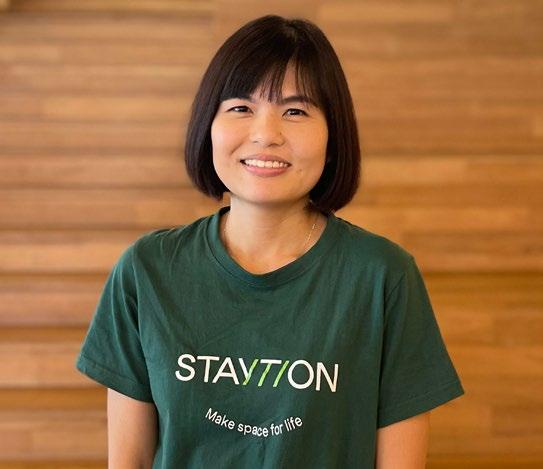
Working from home was never an option for Jane Toh who lives with elderly parents, two young kids, a dog, and a husband who is frequently on Zoom calls. This is why she opted to work in cafes instead. However, cafes would often chase her out for doing work there. Tired of this situation, she decided to start “Staytion,” a co-working space situated in MRT stations.
“The concept of Staytion was borne to allow working parents like me to have the cake and eat it too. I need not go to the office to enjoy enterprisegrade facilities and I get to do my work in a productive zone,” Toh told Singapore Business Review.
“Staytion is a connector and a lifestyle enabler. We alleviate the demands of employees in multigenerational families and people living in tight spaces,” she added.
Toh said she put up co-working spaces directly at MRT stations because having a space located in a transport node will allow its users to get the “best of every world - a caffeine fix, catch-up with friends, or a conference call.”


“We are not five minutes away from the MRT, we are at the MRT.
Staytion is at the forefront of the 15-minute city concept, and we are flying the flag high in support of the work-near-home movement as it significantly lowers the carbon footprint,” she said.
“Convenience is a key factor as a lot of our members are very much in favour and support of our sustainability efforts, hence we want them to be able to easily work in our spaces before they get on a train, or immediately after they hop off a train,” she added.
The first Staytion was opened on 28 September 2022 at Marsiling MRT Station. Two more Staytions will open soon, one at Paya Lebar MRT Station on 14 December 2022 and another at Woodlands MRT Station in February 2023.
Toh said that Staytions are located in stations outside the central business district or in the urban areas to cater to people who want to work in decentralised locations.
Booking a ‘Staytion’
Hybrid workers who wish to work at a “Staytion” can book through its Web App platform, gostayiton.com, where they will need to sign up for an account.
After signing up, users can select their preferred work desk and location. Those who booked a space will receive a confirmation email of their booking. Workers can stay at Staytion spaces for as low as $4.90 per hour. Users can also gain one month of access to the spaces for at least $49.
When staying in the Staytion spaces, Toh said users must comply with house rules which include basic co-work etiquette to clean up after each use and to take calls and/or meetings in dedicated phone booths. Toh said most of Staytion’s users are from small-medium enterprises and large corporations with staff residing near their centres.
Amongst Staytion’s users is renowned literary artist, Shelly Bryant, who said that the startup has given her a place where she can focus on her work without disruption, helping address the challenges she faces with the temptation to overwork and/or over-commit.
“Having the space to really focus allows me to be more productive whilst working, which means I can put my work away at the end of the day feeling it has been a fruitful day, and now it is time to rest. It is a good feeling,” Bryant said.
14 SINGAPORE BUSINESS REVIEW | Q1 2023
Having a space located in a transport node will allow its users to get the “best of every world” (Photo from GoStaytion.com)
Staytion is a connector and a lifestyle enabler
PokeSpace invents a ‘GoogleMaps-like’ parking app for EV owners

The app makes electric vehicle owners’ search for parking spaces and chargers seamless.

The growth of the electric vehicle (EV) industry has been accelerating since the government seeks to implement 100% cleaner energy vehicles by 2040. But according to KPMG, EV drivers are anxious that there are insufficient parking spaces with chargers for EV. This is what a team of developers from Ochlos Holdings Limited is trying to resolve with the app, PokeSpace.
PokeSpace is an app that EV owners can access as if they are searching through Google Maps. They can search for available parking space and EV charging solutions in real time.
Curve shared that developing the app stemmed from frustrations of landlords, drivers, and car park operators on wasting time on unnecessary activities just to secure a car park space.
“You don’t want to spend 10 to 15 minutes in the building and trying to look for a car park. Every time you spend time looking for a [spot] to park, that will likely mean that you are likely to be late for a meeting that doesn’t set up a good atmosphere or mood to enter into a meeting,” said PokeSpace CEO Curve Khong, in an interview with Singapore Business Review
How to navigate the app
When entering a car park, owners would be faced with a lot of beacons in the ceiling, which would show red and green lights to indicate if the parking space is vacant or occupied.
Despite this feature, Curve said vehicle drivers still tend to get lost, especially at parking spaces with two lanes. With the help of the app, Curve said drivers can reserve a parking space and can know the status of the parking space before getting to the car park or even a charging station.

“As you enter the car park, if you have to launch our app, you will pop up a map to bring you to the car park space, which you have reserved,” he said. If they cannot reserve a parking space, the app can offer a satellite view of the whole car park.
“You see where the car is available,
where it’s taken, and you can always select a spot. You try to find a spot that is closest to the area that you are very familiar with,” said Curve.
After a busy day at work in a clinic or getting your groceries from the supermarket, finding where your car is will also be convenient.
The app will also provide you with a path or area where you can get your car to the parking lot.
“That’s how our navigation works. It is very close to what a global positioning system [GPS] would do in your Google Maps when you drive but this is all indoor,” said Curve.
App limitations
The PokeSpace app is still not fullproof as it needs to fix some issues such as installing the navigation setup of its map, where it will include the parking space information.
Developers said some landlords are hesitant to include their parking lots in the app due to privacy.
Landlords are also barring hourly parking as some tenants already paid for season parking, which allows parking a vehicle at a specific space regularly with a fixed rate.
“That conversation is what strikes fear into the landlord and we have to solve this. At the end of the day, the landlord needs to increase revenue as we are facing more inflation nowadays,” he explained.
They eventually found that a car park is 75% full of tenants with season
parking, which allows them to use 25% of the space for tenants that are for hourly parking.
Now, Curve said they are in the process of updating their system by enforcing solutions for seasonal parking and traditional car park users.
‘Poking around’ for sustainability
Aside from providing efficient solutions for EV owners, the team coined the app’s name, PokeSpace, to help users easily understand or read the software.
“We need some words that are easy for them to read out so poking around seems like a good word. Also, the fact that we are managing space so we combined these two words and we call it PokeSpace,” Curve explained.
EV driving is already sustainable but PokeSpace makes it more environment-friendly by reducing carbon footprint when cutting idle driving time for EV owners.
“What PokeSpace does is that you will already know that you are going to have a charging station when you reach your point before you leave your home. You already know that you’re going to be at a charging station. You already know that you’re going to be at a certain place several times,” Vas Jagarnath, Chief Marketing Officer of PokeSpace, told Singapore Business Review.
In the next five years, the PokeSpace CEO is looking to hit 300,000 car parks for its app.
SINGAPORE BUSINESS REVIEW | Q1 2023 15 STARTUP
EV owners can use PokeSpace to search for available parking space and EV charging stations in real time
[Our navigation] is very close to what a GPS would do in your Google Maps when you drive but this is all indoor
Vas Jagarnath
Curve Khong
New 260-sqm command centre enhances security services with advanced technology


It brings together operational silos to offer 24/7 unified remote monitoring capabilities.
Within the purpose-built AETOS Headquarters at 5 Corporation Drive in Singapore is a 260-squaremetre room with hexagonal-shaped ceiling lights and a 12-metre wide LED screen in the centre of the room. This unassuming space is the AETOS Integrated Command Centre (ICC)—the nerve centre of island-wide operations which houses 13 security operators.
Implementing Singapore’s largest 3D digital twin, the ICC is an agnostic platform that ingests data from unlimited subsystems from multiple premises and beyond borders.


“Our Integrated Command Centre unifies what used to be silo operations to catalyse value for our stakeholders,” said AETOS CEO Alfred Fox
It took over more than a year for AETOS to build the ICC. It was launched in March 2022.
Comfortable operator chairs
To ensure that the AETOS staff remain vigilant and motivated whilst being well-trained, Alfred said they make the command centre a comfortable working environment for its operators by providing gaming chairs.


“Our concept was if a gamer can sit on a chair for hours, such chairs will provide good support for our people as well— and they like it,” said Alfred.
The 36 chairs, customised in collaboration with Singaporebased company, Secretlab, were installed in the new ICC.
Hexagonal-shaped
ensure a well-lit command centre without being too overpowering.
16 SINGAPORE BUSINESS REVIEW | Q1 2023
Alfred Fox
lights
AETOS instals gaming chairs for a comfortable workspace for security operators.
The three-dimensional twin is being used to track sustainability targets.
The LED screen allows efficient remote surveillance of multiple locations.
1 1 3 3 5 5
2
4 SPACE WATCH
Security operators also have their own computers when handling clients.
2
4
TRON founder, Justin Sun sees blockchain watering the financial industry’s growth
competitors, the traditional financial institutions like banks and insurance companies, our space is still very small, I think around $1 trillion. The traditional finance industry is probably tens of hundreds of trillions of dollars. That’s why I think this is more like a future as we move forward to become a mainstream financial institution,” he added.
Justin launched TRON, in 2018 and has since then become one of the largest public blockchain platforms in the world. In the same year, TRON acquired BitTorrent Inc., which had more than 170 million active users per month. To date, TRON has more than 110 million users and up to 1,4000 decentralized chain applications.
On sustainability and climate change
Apart from being a business executive, Justin has been the Permanent Representative of Grenada to the World Trade Organization (WTO) since December 2021.
Traditional financial services have been moving to digital as customers shift to making wireless transactions — but is this shift enough to keep them stable in the changing market?
In an exclusive interview with Singapore Business Review, TRON founder and cryptocurrency entrepreneur Justin Sun said that integrating blockchain with traditional banking will be crucial in the industry’s growth.
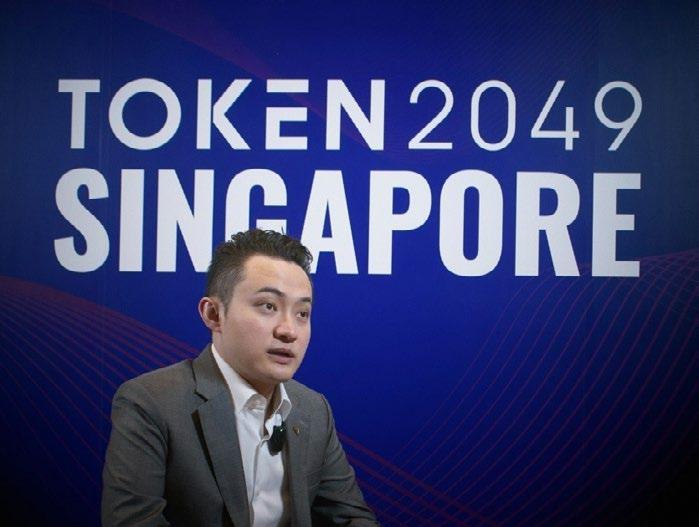
“I think one of the biggest advantages with blockchain [is it combines] internet services with financial services. Financial services is always considered as premier [and] you need to spend a very big amount of money to build financial services amongst different countries,” he said.
Justin said that whilst there are known financial centres worldwide, such as London, New York, Singapore, and Hong Kong, which have built their standards to be sustainable for many years, most rural areas and developing states are not willing to spend money on building branches.
Comparing this with blockchain business, access can be from everywhere. This makes it a preferable option for customers in developing countries.
“So, for example, if you are based in
Cambodia, there’s no difference. If you are based in London, you can get access to blockchain services instantly. That’s why we basically reduce the cost of financial services almost to zero and you can get the services 24/7. I think that’s the biggest advantage of blockchain,” Justin said.
Justin explained that bringing blockchain forward will be beneficial, there are also several hurdles to get through first.
Whilst he pushes crypto and blockchain tech forward with his personal endeavours, Justin also takes part in wider issues such as tackling sustainability in trade and business.
Justin said that the WTO has been studying different states and the main commitment they have identified is that states are willing to commit to becoming carbon neutral. This, however, is not without its own challenges.
“I think going to mass adoption, we still have lots of things to do. We need a better user experience, or when you claim lots of regulatory hurdles, but I think eventually we will get there.”
Justin said he sees blockchain merging with exchange platforms in the future, as it provides a more powerful purchasing capacity for customers holding different currencies.
“I think blockchain will merge with the exchange business… Compared to
“In 2023, we will talk about sustainable development and global warming. This has been a very hot topic in the WTO for many years. Right now, the biggest hurdle or obstacle is that most of the world’s developing states find it hard to come up with an agenda because many of these developing countries still focus on getting everyone in their country to have a sustainable income. The priority continues to be economic development,” Justin said.
Amongst these include countries that have more urgent concerns, pushing their concerns on climate mitigation backwards and, in effect, back by years compared to developed countries. “For example, China has committed to being carbon neutral in the next 10 to 20 years, but since they have about 1.4 billion people, for them to reach carbon neutral is a very big challenge. The same goes for India as well,” he added.
SINGAPORE BUSINESS REVIEW | Q1 2023 17
Justin Sun speaks to Singapore Business Review about working with the WTO and financial institutions.
One of the biggest advantages with blockchain is it combines internet services with financial services
CO-PUBLISHED CORPORATE PROFILE
Justin Sun, TRON founder and cryptocurrency entrepreneur
ONE Pass to rule them all: New work pass offers foreign workers longer stays, and more

The pass, however, is only granted to talents who meet the salary threshold of $30,000.
With talent being the only resource of Singapore, the country cannot afford to lose the global war for talent. This is why the government has further enhanced its work pass framework and introduced the Overseas Networks & Expertise (ONE) Pass.
Zhao Yang Ng, local principal in the Employment Practice Group of Baker McKenzie Wong & Leow, said the ONE Pass is more beneficial to foreign workers compared to the other work passes, like the Employment Pass (EP), since it has a five-year validity period.

Typically, an EP has a two- to three-year validity, whilst the Personalised Employment Pass (PEP) is granted for up to three years, Bird & Bird ATMD’s Senior Associate, Natasha Cheng, explained. Apart from longer validity, ONE Pass also eliminated the need for holders to reapply for a new pass to change jobs, unlike EP holders who need to undergo the process of reapplication.

ONE Pass holders will also be able to “concurrently start, operate, and work for multiple companies at any one time. EP holders can only work for the entity which sponsored his/her EP unless specific permission is sought and obtained from the MOM,” said Ng.
But amongst the benefits that ONE Pass provides, Cheng said the biggest privilege a holder could get is having a dependent, particularly their spouse, to work in Singapore on a letter of consent.
Cheng explained that dependents of EP and PEP pass holders can only work in Singapore on a work pass.
“If an EP holder’s spouse wishes to work in Singapore, the spouse will need to ensure that he/she qualifies for a work pass on his/her own merit,” NG commented.
Qualifying for the ONE Pass
To qualify for the ONE Pass, applicants must meet the salary threshold of $30,000. “Candidates must be earning at least $30,000 as a fixed monthly salary for the last year or they will have to show that they will be earning a $30,000 fixed monthly salary with an employer in Singapore,” according to Cheng.
The salary threshold of the ONE Pass is its most important difference from other existing work passes by the MOM, according to Ng. “The current EP salary threshold is $5,000, or $5,500 if the applicant is in the financial services sector. The salary threshold of $30,000 was chosen as it is comparable to the top 5% of EP holders,” the Baker McKenzie Wong & Leow expert added.
Candidates who do not meet this criterion can still apply for ONE Pass if they have outstanding achievements in the field of arts and culture, sports, science and technology, and research and academia.
“More details on the eligibility criteria for new applications and renewals under this route will be announced closer to 1 January 2023,” Ng said.
On top of these requirements, Cheng said candidates must show that they are going to be working for a company which has a market capitalisation of at least $669m
(US$500m) or a revenue of $267m (US$200m).
Those who are not eligible for the ONE Pass can consider applying for an EP or a PEP.
The PEP, like the ONE Pass, is not tied to a single employer; however, this type of pass is not renewable, according to Cheng. The qualifying salary for the PEP is $18,000 per month currently, but this will increase to $22,500 in September 2023.
“At some point, a PEP holder will lead to transit either to an EP or perhaps to ONE Pass,” she said.
If the ONE Pass and the EP are not viable options, Ng said foreigners can also consider S Pass and Work Permit. However, as these are for mid- to low-skilled workers, it is unlikely they will be helpful in such a scenario,” Ng added.
Potential loopholes
According to Goh Seow Hui, Head of Bird & Bird ATMD’s Employment Practice, the requirements set by the government disqualify “quite a number of people” and “weeds out most companies.”
“To get a seat at the table is really not easy. Just on that alone, I think the idea of it being abused is quite hard to fathom. It’s hard to abuse a system that you can’t even get into in the first place,” Goh said.
Goh, however, said there could potentially be loopholes to the work pass framework.
“There is no time limit for the ONE Pass holder to remain employed. A lot of things can happen in five years. You do well in the first two years and in the middle of that you may lose your job, or circumstances change,” Goh said. The potential loophole, however, can be dealt with through proper enforcement of measures, according to Goh.
“The minister’s response is that everyone reserves the right to cancel [the pass] if there are periods of economic inactivity. It’s a logical response but what remains to be seen is its enforcement. How much of a watchful eye can MOM be? How can they keep tabs on ONE Pass holders and their movements? It’s really an enforcement issue,” she said.
18 SINGAPORE BUSINESS REVIEW | Q1 2023 LEGAL BRIEFING
To get a seat at the table is really not easy
The government has enhanced its work pass framework and introduced the ONE Pass for foreign workers (Photo from One-Visa.com)
Zhao Yang Ng
Natasha Cheng
Embedded finance to be the next big
in disruptive
Future
The banking industry has been enveloped by the rapid demands of its users: adapting to the latest technology, going digital, and being able to serve customers practically anytime and anywhere.
This past year, another development has been seen rising in the industry. Embedded finance and embedded insurance have started to pick up as effective tools to deliver banking needs more instantly to a wider number of users –and this time not just in banking apps.
To delve deeper into what embedded finance is, Singapore Business Review spoke with Peter Miller, CEO of Fermion, to know how different it is from banking-as-a-service (BaaS) models.
“Embedded finance revolves around integrating access to financial services and solutions, whilst banking-as-a-service (BaaS) centres on providing a technological foundation that banks rely on to offer those financial services and solutions,” Miller said.
Expounding on the concept, Miller explained that embedded insurance stands as a subset or part of embedded finance or BaaS model.
The idea is to add embedded finance as an interconnected set of complimentary services. A good example of embedded insurance is when purchasing an airplane ticket, travel insurance or further extensions such as telemedicine or emergency money are made available to the customer.
However, the main goal of embedded finance is to provide for the customer’s needs—at the exact moment, they may need it without having to redirect or jump to another platform or site.
“Thus, what banks need to consider always
is how can they best serve customers with banking and insurance products wherever and whenever customers need banking and insurance products and how they can best leverage their considerable assets to ensure they are always offering a differentiated proposition,” Miller said.
Fermion helps banks and non-bank affinity partners to on-sell insurance. It also offers insurers ready access to over 230 banks and numerous financial institutions. This enables insurers to connect and seamlessly embed insurance into customer-centric sites.
Including pension funds, Fermion’s savings & protection ecosystem connects 500,000 corporations and financial services providers, reaching over 11 million members.
With Fermion’s deep domain expertise, of having worked with over 150 insurance companies, Fermion helps banks embed insurance products into their customers’ journeys by analysing data and turning these into assets. Key touch points that can maximise revenue at a minimal cost are determined in the customer journey.
A personal and transformative shift in digital banking
Speaking next to Andrew Tan, Silverlake Axis’ Group Managing Director, one new trend that he saw in the digital banking scene is that there is now a shift to having cloud-based platforms.

“From an IT spending perspective, cloud spending represents a very robust area of growth. Some 65% of Asia Pacific banks surveyed either plan to move or have already moved their workloads to private and/or public cloud environments. Cloudbased platforms are the cornerstone to building new capabilities and deploying cost-effective transformative solutions,” Tan shared.
He said that the past years have seen a rise in digital lending, thus uploading banking services to digital is no longer an option.
To stay competitive in the APAC financial services market, banks are required to leverage modern, digital-first and component-driven transformation technology to effectively scale their digital capabilities.
Disruptive technology not only transformed banks into customer-centric institutions, but also revamped their business model to become modern, secure, and stable. Disruptive technology has transformed into a reliable system with real-time problem-resolution capability.
Silverlake Axis has a strong 100% successful track record and continues to provide solutions for both digitally mature and traditional players. It offers MÖBIUS, a composable out-of-the-box digital cloud for banks seeking to transform to a cloudnative solution, whilst it has the SIBS for banks that do not require a rip and replace in order to innovate and modernise.
Tan said that Silverlake Axis remains to make its banking partners successful as it provides experience, expertise, and execution to help banks navigate through digital transformation swiftly.
“Banking transformations are generally risky and fail more often than not due to people issues rather than technical ones. Most solution providers focus purely on technical issues. This is why experience, expertise and execution matter,” Tan said.
“Silverlake Axis has helped many banks transform over the years. We have been there when the ATM was first introduced in the 80s, then banks started to invest much later in internet banking…Technology will always evolve but having a Stable Core with an experienced partner to help integrate all these platforms transact seamlessly and successfully [is key].”
SINGAPORE BUSINESS REVIEW | Q1 2023 19
banking apps should be more customer-centric, much like Grab and Netflix.
thing
tech
To stay competitive in the APAC financial services market, banks are required to leverage modern, digital-first and component-driven transformation technology to effectively scale their digital capabilities.
CO-PUBLISHED CORPORATE PROFILE
Andrew Tan, Silverlake Axis’ Group Managing Director, and Peter Miller, Fermion’s CEO
GIA covers insurers’ fraud blind spots
The Fraud Management System uses data analytics and AI that analyse suspicious claims.
In mid-2022, a Singaporean woman fooled six insurers before being sentenced to five months in prison for making 20 fraudulent travel claims worth more than S$14k. The perpetrator used photos of damaged goods, receipts, boarding passes, and even police reports she found online and digitally altered them to support her claims. She would have gotten away with it if not for the General Insurance Association of Singapore (GIA)’s Fraud Management System (FMS).
According to Andrew Yeo, CEO of Income and GIA Management Committee Member and Insurance Fraud Committee Convenor, insurance fraud cases in Singapore more than tripled from 20 in 2018 to 71 in 2021.

“With the reopening of the borders, we are observing an increase in suspicious travel insurance claims between January and July of last year compared to the same period in 2021,” Andrew said.
Aside from travel insurance fraud, one of the biggest and most vulnerable segments is motor insurance.
“Motor insurance fraud syndicates are known to operate through a network and recruit individuals to participate in the scam,” Andrew explained. A report by Crawford said at least 20% of all motor claims are fraudulent with claimants exaggerating their injuries and/or inflating the damage to their vehicle. Most of these cases are made by organised crime syndicates which stage traffic accidents and recruit hundreds of people as part of their activities.
“To date, over 300 subsequent motor insurance claims have been investigated by insurers with 13 confirmed as fraudulent cases which have now been turned over to the police,” Andrew added.
General insurance’s first line of defence
GIA has collaborated with the police, insurers, and the Commercial Affairs Department to combat fraud using FMS. First launched in 2017, the FMS uses data analytics and AI to detect potentially fraudulent claims at scale.
“When a suspicious claim is detected through the FMS, insurers involved will be contacted to verify the suspicious claim. If sufficient evidence reveals that there is fraud, a police report will be filed and the insurers involved will then need to cooperate with the police,” Andrew explained.
Andrew stressed the importance of the FMS as most of these cases would have gone unnoticed if it was just done through a manual review and even embolden fraudsters to continue with these schemes.
Other ways
Aside from the FMS, the GIA also collaborates with specialist investigators from the Commercial Affairs Department and insurance representatives through the GIA Insurance Fraud Committee (IFC).
Insurers provide claims insights which are then shared with the police and fed into GIA’s FMS
The GIA is also working closely with the Singapore police’s specialised fraud investigation branch, which is also part of the IFC. These agencies share information and best practices in detecting and preventing insurance fraud.
“For example, should the police receive reports on a new variant of insurance fraud, they will inform us and we will review our safeguards and conduct more stringent checks to verify the authenticity of the claims,” Andrew said.
This collaboration goes both ways as the GIA also exchanges information with the police on the possible characteristics of fraudulent insurance claims.
“Insurers play a pivotal role as they provide claims insights such as the latest trends and common forms of insurance fraud that they observe, which are then shared with the police and also fed into GIA’s FMS for further refinement of its detection capabilities,” Andrew added.
The GIA is also tapping the public to help them identify insurance fraud. Under the GIA Insurance Fraud Tip-off (GIFT), a person who reports fraudulent activities can get a reward of up to $10k leading to successful prosecution and conviction of general insurance fraud cases concerning members of the GIA.
Insurers’ role
“Insurers are able to provide insights such as the latest trend and common forms of insurance fraud that they observe. This feedback will help refine the FMS system further,” Andrew said.
20 SINGAPORE BUSINESS REVIEW | Q1 2023
CEO INTERVIEW
The GIA is also working closely with the Singapore police’s specialised fraud investigation branch (Photo: Andrew Yeo, CEO, GIA)
Flexible work arrangements key to employee recruitment, retention
Paradise Group Holdings’ Karen Tan talks about their commitment to employees’ work-life harmony and their adoption of the Tripartite Standard on Flexible Work Arrangements.

Out-of-the-box FWA Programmes
Today, about 15% of Paradise Group’s 1,300-strong workforce benefits from the company’s FWA and telecommuting programme. To hire and attract more employees, the organisation came up with four out-of-the-box FWA schemes for its frontline or operational F&B employees.
• Half-day regulars - For senior workers, those with family or caregiving responsibilities
• Workday regulars - For homemakers who prefer working certain hours on weekdays
• Weekends/Public holidays - For tertiary students and young adults
• 3-day work week - For senior workers, those with family or caregiving responsibilities. Newly implemented in 2020.
have returned to the office to facilitate interaction and operational needs after the two-year lockdown. However, the organisation continues to provide telecommuting opportunities and staggered work hours.
More Flexibility in the Future
To further demonstrate its commitment to its employees’ work-life harmony, Paradise Group adopted the Tripartite Standard on Flexible Work Arrangements in April 2020 and enhanced their flexible work options that benefit both the organisation and their employees.
The food and beverage industry is known for its long working hours and different work shifts, making hiring and retaining employees an enormous and continuing challenge. These issues were magnified at the height of the COVID-19 pandemic.
As pandemic restrictions have considerably eased, companies are discovering that adopting flexible work arrangements (FWA) is key to hiring or getting their employees to return to the office. Paradise Group Holdings, a Singapore-based restaurant group, was a pioneer in implementing work-life and FWA initiatives in 2012.
“We started such flexi-work schemes ten years ago when it was still pretty unheard of. We wanted to attract and retain employees by offering flexibility in working hours. We also wanted to attract more locals, such as secondary breadwinners and tertiary students, to supplement our full-time workforce,” said Karen Tan, Regional HR Director of Paradise Group.
“Over the years, our flexi-work schemes have generated much interest. Other F&B companies have also started implementing similar schemes in the last few years.”
The implementation of FWAs has improved Paradise Group’s talent retention significantly. Company data shows that their employees stay for an average of 3 years. More than 22% have been with the company for 5 years and above, whilst 5% have more than 10 years of service. The longest-serving service/kitchen staff has served for about 17 years, and about 100 employees are set to receive their 10-year-long service award early next year.
Remote Work Corporate Functions
For employees who perform office or corporate functions, the company introduced the telecommuting scheme. Prior to launching the programme, the company laid down the groundwork to ensure employees were ready for the switch. This included establishing the infrastructure, arranging for laptops for all employees, providing access to databases and VPNs, and having the IT support team on standby. The company also researched industry-based protocols for staff working from home, and updated employees on remote work initiatives, including employee engagement. Currently, Paradise Group’s employees
Implementing FWAs has given the company flexibility in manpower deployment, and the capability to better attract and retain employees. It also enhances engagement, motivation, productivity, and satisfaction whilst addressing employees’ work-life needs.
Moving forward, Paradise Group “expects hybrid remote work arrangements to dominate the future of work patterns and is likely one of the main motivations for employees, especially the relatively younger generation,” Tan predicted.
She highlighted that the sooner employers embrace FWA practices, the fewer challenges they would face in meeting the needs of the evolving workforce. This, in turn, will translate into greater employee satisfaction and retention.
The Tripartite Standard on Flexible Work Arrangements (TS FWA) specifies a set of verifiable and actionable practices that employers should implement at the workplace to help their employees better manage their work-life needs through flexible work options.
The Tripartite Alliance for Fair and Progressive Employment Practices (TAFEP) also offers complimentary Tripartite Standards Clinics to help employers establish these practices.
To learn more about the Tripartite Standard on Flexible Work Arrangements, visit tafep.sg today.
SINGAPORE BUSINESS REVIEW | Q1 2023 21
CO-PUBLISHED CORPORATE PROFILE
Over the years, our flexi-work schemes have generated much interest. Other F&B companies have also started implementing similar schemes in the last few years
Love, Bonito uses data to develop actionable insights in fashion
to maximise stock levels at each store and decisions to select what products they should offer and how and when they should be released.
The company’s in-house design trackers, meanwhile, work with the designers to identify winning designs and gain insights from under-performers. “In the long run, we turn customer insights into actionable plans that drive the design process,” Leong said, adding that customer lifetime value over customer acquisition cost ratio increased seven times.
Trends and challenges
In the past two years, Love, Bonito has been accurately forecasting the demands of its customers, with a monthly mean average percentage error of less than 10%. Because of this accuracy, the brand is able to prevent overproducing items and cut out underperforming products. This was all thanks to its established data team and infrastructure.
Love, Bonito’s in-house data team and infrastructure were established in 2019. It initially aimed to make analytics scalable and build a data culture within the company.
Now, its data team focuses on translating actionable insights from data, building automation and decision modelling to drive growth and efficiency across the organisation.
“This allows us to identify and recreate winning designs that customers love and at the same time, improve other designs based on customers’ likes and preferences. There are also plans to use data
science and AI to enhance customer experience based on customers’ psychographics and shopping habits online and in-store,” CEO Dione Song told Singapore Business Review


“It’s critical because it helps us make better decisions. Data is knit into every part of our business from understanding customer preferences and changing trends to driving efficiency in our inventory decisions and identifying new opportunities for our business,” Vice President of Data and Growth, Jane Leong added.
Data strategy
Love, Bonito uses both first-party data which include transaction, behavioural, and survey data collected from their platforms, and third-party data or industry and competitor research. It keeps track of over 100 product attributes per SKU and gathers information and feedback from customers.
The data team looks at various information which includes product attributes of popular designs, ways
To date, Love, Bonito has 16 physical stores in Singapore, Hong Kong, Malaysia, Cambodia, and Indonesia and also ships to 20 countries worldwide. Even if the company started as an e-commerce business in 2010, it was still not spared from the supply disruption caused by the pandemic. Song, however, said that this presented an opportunity for Love, Bonito to recalibrate their omnichannel efforts to emphasise online versus in-store activations due to uncertainties in movement.

“Now, we’ve pivoted to designing home and comfort wear, such as our Staples (officially named The Staples) and Loungewear lines. We also started to incorporate workwear into our assortment a few months ago as safety measures have eased and we see more customers adapting to clothes needed for the hybrid workhome environment,” Song said.
Song said that whilst it is important to have channels and touchpoints needed to reach customers, it is also vital to be as “channel-agnostic, customercentric, and hyper-thoughtful as possible to go to where shoppers are,” noting that customers expect convenience and want connections and a sense of community. It is also important for brands to have an “authentic and clear purpose, and value system” as customers have become more discerning, especially the millennials and Gen Zs.
22 SINGAPORE BUSINESS REVIEW | Q1 2023 STORE WATCH
Love, Bonito turns customer insights into actionable plans that drive the design process (313 Love, Bonito store reopening. Photo courtesy of Love, Bonito)
The brand’s data strategy led to an 8% increase in its second purchase rate.
Data is knit into every part of our business
Dione Song
Jane Leong
Transform how dentists treat with the








How to stay ahead of SMEs’ financial needs
ANEXT Bank’s CEO talks about why digital banks are the key to this challenge.
Toh Su Mei recalls a time during the early days of her career when a former colleague made a data entry mistake in the bank record of a small and medium-sized enterprise (SME).
“That seemingly small mistake ended up affecting the SME’s request and access to a credit line to fund his business operations. That was when I realised banking was more than just a job for me,” Toh, CEO of ANEXT Bank, told Singapore Business Review
Prior to that, banking just seemed the natural course of action given Toh’s education background, saying that she “stumbled” into the industry after graduating with a major in Economics. But moments such as this cemented to Toh how critical their role is to small and medium enterprises.
“I’ve not looked back since my first experience where I witnessed first-hand how the right financing solution and quality of banking services could make or break a business. And for small and medium enterprises, this was even more apparent,” she said. It became more than just banking to Toh. “It was an opportunity for me to make an actual difference – it’s not about financing a business, but a person’s livelihood and aspirations. Constantly and actively listening to customers is key, and I enjoy the deep relationships built with my customers in this process. If I somehow had to choose my first job again, I’d pick banking and do it all over again!” the CEO explained.
Decades later, Toh is now Chief Executive Officer of ANEXT Bank, one of the newest digital-only banks granted a license to operate by the Monetary Authority of Singapore (MAS), with over two decades of serving SMEs both in Singapore and across the region. Prior to her new role, Toh was regional head, SME loan product management & alternative lending for DBS Bank.
It was a role that prepared Toh to lead one of the country’s most anticipated virtual banks, and she has incidences like the one she shared earlier in mind as she and her team took advantage of their structure as a digital-only bank to find ways to better service SMEs.
“[A] key differentiating factor for digital banking is the ability to ensure a consistent service and operating model at scale versus say a RM-led [relationship manager] approach where incidents like what I shared earlier, will be far and few,” the ANEXT Bank CEO shared.
You made the jump from being a head in a traditional bank to becoming the chief executive of a digital-only bank. So far what has been the difference? Tell us about your leadership style. What kind of work culture do you cultivate as the CEO of ANEXT Bank?
Traditional bank or digital bank, I believe that for it to be successful, its people have to be passionate and obsessed with the desire to understand and serve customers. That’s
why for us, having the right people and culture is the most fundamentally important part of setting up the business. I strongly believe that with the right people, you can achieve anything as one team.
Our local team is formed by people that are passionate, driven and leaders of their own fields. Over 90% of our staff at ANEXT Bank are local hires, [and] they bring with them a range of industry experiences from banking, fintech to technology. The average working experience of the team is more than 15 years.

I’m also an advocate of an open and transparent company culture, people are encouraged to speak of their minds freely, take ownerships and collaborate.
Why does the banking sector still find it hard to meet the financial needs of SMEs in Asia?
There is no lack of trying by the banking sector for sure. The challenge is that the needs of SMEs today are changing rapidly - the markets they operate in, the business models they adopt and the financial needs they have are much more diverse each day. As a digital bank, we are looking to tackle these diverse needs by providing financial services at scale – for example, providing more accessible and effortless financial services to SMEs of all sizes, and not just to the bigger boys.
As business models evolve towards a hybrid and digital-
24 SINGAPORE BUSINESS REVIEW | Q1 2023 INTERVIEW
There is no lack of trying by the banking sector. The challenge is the rapidly changing needs of SMEs
It became more than just banking – it was an opportunity to make an actual difference (Photo: Toh Su Mei, CEO, ANEXT Bank)
first model, so should financial services. According to a Deloitte research, small businesses account for more than 85% of cross-border e-commerce market in the Asia Pacific region. And that’s just one segment of the “unserved and underserved” SME community that ANEXT Bank is looking to serve. Essentially, SMEs who have pivoted their business models to a hybrid and digital-first one, and for whom we’re anticipating and serving their financing needs through embedded financing – basically enabling access from where they’re doing their businesses digitally.
I also believe that there is room for the traditional banks to collaborate with fintechs and digital banks. Together, the industry can complement each other and truly provide diverse services to SMEs across their growth journey.
As head of SME banking in past banks, what have you and your team(s) done to solve the financing gaps of SMEs–and how do you plan to bring these solutions and services to the next level as the leader of ANEXT Bank?
First of all, we truly live our mission of “providing innovative, accessible and effortless banking services” in our product design. We want to make banking an easy and rewarding experience for SMEs, because we know business owners have no time to “operate bank accounts” and spend time to figure out cross-border FX, interest rates, amongst others.
It was with this mindset that we launched the ANEXT Business Account – a no frills business account that did not require fees to start nor maintain so as to help defray operating costs. We enabled remote onboarding which meant an SME abroad did not literally have to go all the way to open an account, and we’re seeing a lot of foreign business owners take advantage of this feature, which in turn motivated the team to dive deeper into the needs of the different SME personas so as to push out even more relevant features.
Our next priority is to innovate together with partners. Adopting an open and collaborative approach, we believe in joining hands with industry partners and public sector
agencies. By leveraging on each partner’s unique position, knowledge and subject matter experts, we are able to tackle industry pain points at scale.
What are your goals as leader of ANEXT Bank? Both business goals and people goals are important to me. On the business side, our goal is to truly deliver on our promise, that is to bring about what’s next in financial services and provide micro and small businesses digital financial services that are innovative, accessible and effortless to enable them to succeed in business. On the people side, I’d like to build the right culture to allow everyone to excel and shine in their job roles.
What three things have you learned from your experiences that shaped you as a banker?
First, know your customers. This is fundamental and the first step to getting things right. Stay focused on the long term: It’s easier to go from 0 to 1, than to go from 1 to infinity. Although I’ve said that launching ANEXT Bank is the most memorable moment so far on this journey, I know it’s just the start. The focus now is on building a scalable, sustainable and customer-centred business model for the bank. Remember that there are humans behind the technology: A passionate team who truly cares about the customers defines the quality of products and services, and defines who we are as a bank.
What are the biggest challenges in building a neobank from the ground up, and how did you and ANEXT Bank overcome these challenges so far?
The biggest challenge was really in attracting and building a team of like-minded people that’s driven and passionate in enabling effortless access to financial services for SMEs.
To reimagine business banking and how it should be, we needed to have diverse talent that could look at things from a different perspective to solve the needs of our customers, and we were fortunate that many believed in our mission and values to join us in our journey to being Singapore’s newest digital wholesale bank.

We believe that in pushing boundaries to bring about what’s next in financial services as a team, it will also help support the local talent development as we work with all participants in the financial services industry to raise the bar for the sector. Together, we can cement Singapore’s reputation as a leading fintech and innovation hub.
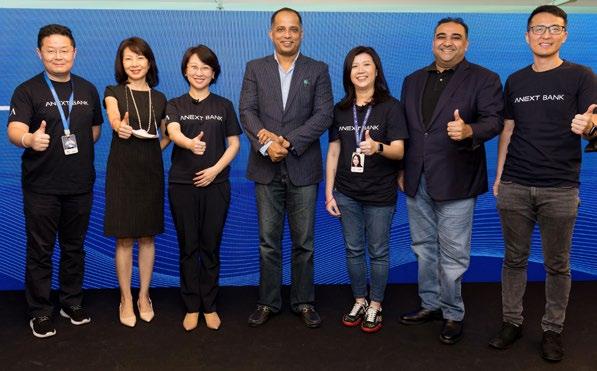
SINGAPORE BUSINESS REVIEW | Q1 2023 25
INTERVIEW
There is room for the traditional banks to collaborate with fintechs and digital banks
ANEXT Bank with Sopnendu Mohanty of MAS at the digital-only bank’s soft launch event
Toh Su Mei during the digital-only bank’s soft launch (Photo from ANEXT Bank)
INDUSTRY INSIGHT: POWER
Singapore digs deep to unleash geothermal energy potential
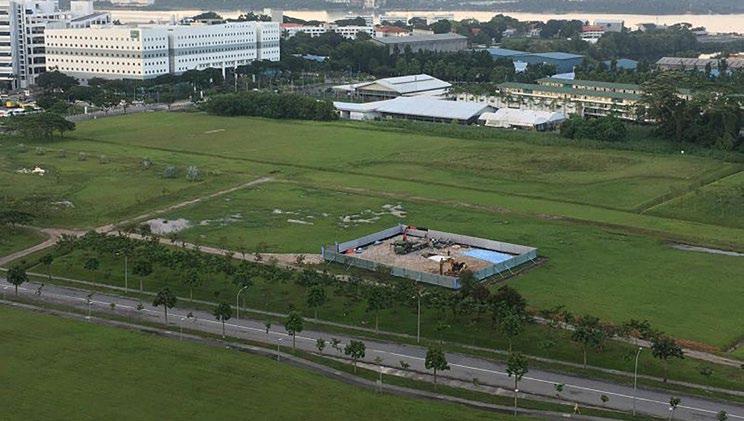
October 2021 and is expected to conclude by October 2023, focuses on the northern and eastern regions in Singapore like the Sembawang Hot Spring Park that have higher surface temperatures and are deemed to have potential. Romagnoli said that the Sembawang Hot Spring is within the Simpang Granite pluton bedrock, citing the latest geological map of Singapore by the Building and Construction Authority. According to a 2019 study by Gillespie et al., the Simpang Granite pluton has a “high concentration of naturally occurring heat-generating elements.”
“Our ongoing study seeks to measure the rocks’ elemental concentration and the temperature of the granites from our deep boreholes. We can better estimate the geothermal energy potential in Singapore when the volume of the hot granite is better constrained,” Romagnoli said.
Unlike its Asian neighbours, Singapore has no known shallow heat source. That is why the country exerted more efforts to unearth its geothermal potential to diversify its energy sources. It turned out that its geothermal potential could cover a sizeable portion of Singapore’s energy mix, an expert said. The country’s Energy Market Authority (EMA) in April issued a request for information to conduct a geophysical investigation project to assess the country’s geothermal energy potential. The EMA said that progress in technologies such as the Advanced Geothermal Systems enabled the extraction of heat from hot dry rock and at greater depths, opening the potential for geothermal applications locally as the country is within a region of high subsurface heat flow.
“If found to have substantial geothermal resource potential, Singapore could consider the technology options available to deploy geothermal energy locally,” the EMA said.
“Singapore has several hot springs and estimated anomalous heat flow. The higher-than-average heat flow could potentially heat up the granite rock underlying Singapore,” said Alessandro Romagnoli,
tech options available to deploy geothermal energy locally
Associate Professor from the School of Mechanical and Aerospace Engineering at the Nanyang Technological University (NTU).
In Singapore, the volumetric extent of the hot rock is unknown, Romagnoli said, adding that it is also possible that the actual potential may be less than what is expected.
According to the International Renewable Energy Agency (IRENA), geothermal resources are thermal energy that is stored as heat in the rocks of the Earth’s crust and interior. Areas with high-temperature water or water vapour at or near the surface were often called “active” geothermal areas. Water or water vapour from fissures to deeper depths in areas saturated with water may be tapped for electricity generation “at relatively low cost.”
If an area lacks such, geothermal energy can still be accessed through drilling to a deeper depth and injecting water through wells to utilise the heat in dry rocks, the IRENA report said.
Ongoing study
Romagnoli is leading a study by NTU on Singapore’s geothermal energy potential in partnership with TUM Create and Surbana Jurong Group. The study, which started in
He said that they have collected data like borehole logs, shallow borehole temperature data, and heatproducing element concentrations in the country’s granite at shallow depths. They have also updated the geological map of Singapore.
The data is used in developing their in-house geological model and nearsurface temperature distribution map which helps them in identifying sites for deep exploratory drillings.
“Data from the deep boreholes will be used to verify and constrain our computer model, an essential tool to help us in resource estimation and further development plans,” Romagnoli said. “Our current upcoming activities are the boreholes deep drilling and temperature measurement,” he added.
NTU said in a statement that another study on geothermal supported by the National Research Foundation includes the testing of a quantum gravity sensor to look at the composition and structure of selected geographical sites in Singapore. This can help weigh the applicability of potential sites for geothermal power generation.
Low-carbon alternative
As part of its sustainability initiatives, Singapore’s energy sector is moving towards the “four switches” to achieve net-zero emissions by 2050, according to the Energy 2050
26 SINGAPORE BUSINESS REVIEW | Q1 2023
Volumetric extent of hot rock where geothermal is sourced remains unknown.
If found to have substantial geothermal potential, Singapore could consider
Sampling site at Admiralty Lane where Romagnoli’s team is doing a study on geothermal energy potential (Photo courtesy of NTU Singapore)
Committee Report released by the EMA. Geothermal energy is amongst those considered.
The first switch to adopt is the use of natural gas for power generation, but gas turbine manufacturers can make more energy-efficient models of natural gas-fired power plants. Carbon capture utilisation and storage technology may also be used to remove the carbon footprint.
Solar power, the most viable renewable energy source in Singapore, is the second switch to the energy transition, whilst regional power grids and electricity imports are the third switches. Whilst longerterm low-carbon alternatives are still being developed, the third switch can help ensure energy security.
Low-carbon alternatives which include geothermal energy, are included in the fourth switch and are needed to decarbonise Singapore’s power sector in the longer term. The report said that hydrogen is a “promising candidate.”
Conventional hydrothermal systems are not applicable to Singapore due to its dry rock conditions, but next-generation geothermal systems that use fracking or closed-loop system methods are “potentially deployable in Singapore’s environment.” Nuclear power is still being developed and tested in other countries.
Sharad Somani, Head of Infrastructure at KPMG Asia Pacific, said it may be too early to tell which is the most viable option, but Singapore benefits “from its geographical position of being at the nexus of regional connectivity of logistics, pipelines, and power grid infrastructure.”


“It has the potential to be a regional energy hub at the centre of an integrated power grid. Separately, the potential of Singapore championing and trailing the use of green hydrogen to replace natural gas is another attractive option,” Somani said.
Aside from these, Somani added that some policy levers are needed, and one that Singapore has undertaken is the carbon tax. Coupled with carbon exchange for trading credits, this will also help companies to plan a decarbonisation map better.
“There is also a need to
INDUSTRY INSIGHT: POWER
encourage companies to embrace decarbonisation alternatives and work with the government to focus on new technology solutions. Furthermore, Singapore can act as a test bed for technologies and promote pilot projects in energy storage, energy efficiency and distributed generation to evolve a holistic pathway to net-zero,” he said.
Challenges to geothermal potential Romagnoli said that the extraction of geothermal energy is constrained by several factors such as how fast the heat energy from the hot rock can be extracted, how long the rock can remain hot enough, and how deep the hot rock resides.
“Highly fractured rocks tend to allow for faster heat extraction. However, if we extract the heat too quickly, the rock may cool faster than expected, thereby risking the lifespan of the resource,” he said.
Drilling and fracturing of rocks at great depth may be needed to access heat energy from deep hot dry rocks, but these processes remain “technically challenging” and “expensive,” he said.
New heat extraction systems, however, that do not require the fracturing of the rock make it more feasible for geothermal heat extraction in Lion City, he said.
Singapore’s limited exposure to geothermal energy development in the past several years also poses a challenge, but the recent move requesting information on geothermal energy exploration indicates an accelerated effort to tap into the energy source, Romagnoli said.
IRENA said that generally, there are challenges in developing a geothermal project when it comes to the assessment of the resource and how the reservoir will react once production starts. Amongst others, it said subsurface resource assessments and reservoir mapping are expensive to hold.
Test wells need to be done to allow developers to build models of the reservoir’s extent and flow and how it will react when water and steam are extracted for power generation. Despite much, much will remain unknown about the performance of the reservoir and how to manage it best during its operational life, before
operational experience is gained, the agency said.
Aside from the increasing development costs, geothermal projects also have very different risk profiles compared to other renewable technologies in terms of development and operation. Their development also depends on the availability of comprehensive geothermal resource mapping, according to IRENA.
In developing unconventional geothermal resources, the use of enhanced geothermal or hot dry rock approach is less mature, adding that some projects cost significantly higher due to the deep drilling required, making the economics of such projects much less attractive, it said.

It said that research and development into “more innovative, low-cost drilling techniques and advanced reservoir stimulation methodologies are needed to help lower development costs to make them more “economically viable.”
Technologies
Shruti Raghuram, junior analyst at Rystad Energy, added development of the geothermal resource will rely heavily on subsurface conditions such as “permeability, porosity, availability of shallow reservoirs and reservoir temperatures.”
To address these concerns, Raghuram said Enhanced Geothermal Systems (EGS) and Advanced Geothermal Systems (AGS) could be the key to unlocking the energy source in Singapore.
SINGAPORE BUSINESS REVIEW | Q1 2023 27
In a populationdense country like Singapore, geothermal has the potential to provide reliable baseload electricity
Geothermal as an energy source has been largely untapped in the past
Sharad Somani
Alessandro Romagnoli
8 investment ideas to achieve affluence in the year of prosperity
Financial experts said active portfolio management is crucial amidst economic uncertainties.
Feng shui experts predict that 2023 will be a year of hope and prosperity, however, financial experts warned that familiar foes like inflation and geopolitics like the rivalry between the G2 powers of China and the US will continue to haunt investors during the year.

Stefanie Holtze-Jen, APAC chief Investment Officer of Deutsche Bank International Private Bank, shared eight investment ideas that can help investors to navigate systemic risks. Liquid and investment-grade bonds from the US and Europe
According to Holtze-Jen, yields and quality are now no longer mutually exclusive.
“European bank bonds, for example, would seem to be worth greater consideration because underlying capital adequacy and credit risk data have improved substantially in recent years,” she said. Standard Chartered reported that the 10-year US government
bond yield is expected to rise towards 3.75% to 4.0% in the first quarter of 2023 given that the Federal Reserve is maintaining “tight financial conditions for now.”
Citibank, in a separate report, had a similar take saying that they see “potential for pursuing portfolio income” with short- and intermediate-term US dollardenominated bonds.
Speaking of bonds, Holtze-Jen said active bond portfolio management will remain the watchword in 2023. She said adding floaters, or bonds with variable returns, to the portfolio might be helpful to investors.
In relation to this, DBS Chief Investment Officer Hou Wey Fook said it is also time to pursue a 60/40 portfolio strategy, consisting of 60% equities and 40% bonds.
“With bond yields at above 5% today and equity valuations having mean reverted, we believe the window is now open to be engaged
As the USD turns around, the currencies of commodityexporting countries have catch-up potential
for the long term, in a multi-asset portfolio of equities and bonds,” said Hou in a report.
The DBS study indicated that markets are recovering well after a big drop so making a strategy such as the 60/40, which balances risk and reward, is a good choice.
Commodity currencies
Europe and the US are expected to see economic recovery in 2023 following their “shallow recession path,” supporting most commodities.
“As the US Dollar turns around, the currencies of commodityexporting countries such as Australia, Canada, and Norway seem to have catch-up potential,” Holtze-Jen said.
Bank of Singapore’s Head of Investment Strategy Eli Lee, meanwhile, cautioned against overshooting hopes on US equities, saying that the country will chart a bumpy course throughout the year.
“Over the next few months, we
COVER STORY 28 SINGAPORE BUSINESS REVIEW | Q1 2023
A strategically well-diversified portfolio is crucial to achieving prosperity in 2023
could see negative revisions for 2023 earnings per share (EPS) continue to occur on the back of rising labour and input costs, margin pressures, and pockets of weak consumption trends in certain markets,” Lee warned, adding that valuations do not appear attractive at this juncture given the relatively modest equity risk premium levels.

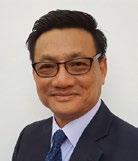
Lee entertained a possible US recession in the second half of 2023, noting that this may improve priceto-earnings ratios.
“As we enter a likely recession, we believe markets will start to entertain the prospects of a slower cadence of EPS cuts, corporate operating leverage in 2024, and a potential Federal Reserve pivot. These could help to lift price-to-earnings multiples, even if EPS takes some time to recover,” Lee said.
Standard Chartered said Australian dollars (AUD) and Canadian dollars (CAD) are likely to “trade range-bound over the next one to three months as the risk of a global growth slowdown is likely to cap commodity prices.”
“However, as we move through 2023, the broad-based USD weakness, expected improvement in China’s growth outlook and the correction of the fundamental undervaluation based on Terms of Trade, especially for AUD/USD, are likely to enable commodity currencies to appreciate by 3-5% vs the USD,” Standard Chartered reported. Within emerging markets, Holtze-Jen said countries like Brazil, Chile, and Peru or “the ones that are profiting from high commodity prices” look good for FX exposure.
“South America’s central banks were also quick to start raising their base rates which support their currencies,” she added.
Cyclical, cheaper stocks
Investors were advised to look at stocks from sectors that are more cyclical and cheaper in valuation.
For cyclical stocks, Holtze-Jen picked financials, materials like chemicals, and energy stocks since they trade at depressed valuation levels on a historical comparison.
For investors wanting to position themselves more defensively must consider stocks from cheaper sectors such as healthcare.
“The sector offers above-average earnings growth supported by strong secular trends at a reasonable price,” the expert said.
According to Citibank, demand for healthcare “will likely grow faster than the economy over time.”
“We favour healthcare stocks. They have outperformed the broader market in seven of the past eight times the economy decelerated…We see a compelling case for portfolio exposure to this source of long-term growth,” the financial services company added.
Those investing in stocks must also buy from companies with a strong price-setting power, advised Holtze-Jen, adding that these firms are “likely to be able to pass rising costs on to consumers and thus sustain their margins in prolonged inflationary periods.”
“Stocks, unlike bonds, could show rising nominal returns during inflationary phases,” she added.
Europe
In terms of location, Asian investors should look into Europe, given the acuity valuation discounts in the region seem to be “disproportionately high” despite the economic and geopolitical risks.
“Extensive fiscal programmes and high levels of savings should buoy private consumption and expected stronger Chinese growth will be important to many European companies,” Holtze-Jen commented.
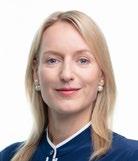

Standard Chartered advised investors eyeing investments in Europe to look into “financials given inexpensive valuations and improving earnings on the back of higher interest rates.”
“We also prefer the energy sector, given the still significant sector discount, compared with history,” the financial services company said.
Citibank, on the other hand, favours defensive sectors such as healthcare and consumer staples and has become less constructive on energy and industrials.
“We continue to see upside potential for green energy and infrastructure going into 2023, given Europe’s need to diversify its energy mix away from Russian natural gas dependence,” Citibank added.
Asian markets
Amongst emerging economies, Holtze-Jen said Asian markets remain the most attractive, particularly countries in the northern markets like South Korea, Taiwan, and China which saw strong declines in valuations in 2022.
“The average drop in these equity markets was around 20%, a trend that has now been partially reversed. These markets may make a comeback when the macroeconomic environment and investor sentiment improves,” she said.
In China, Standard Chartered said it would buy the communication services and consumer discretionary sectors, which it expects “to benefit from increasingly supportive policies and reduced mobility restrictions.”
Apart from the northern Asia markets, Holtze-Jen said India and Japan can also “outperform” in 2023. ”India is currently expanding its manufacturing on a massive scale and launched a major infrastructure investment programme in early 2022 to encourage foreign company offshoots,” she said.
“The Japanese government is banking on comprehensive fiscal support to alleviate the energy crisis for its domestic businesses,” Holtze-Jen added.
Bank of Singapore’s Lee meanwhile expects a potentially less dovish monetary policy and market volatility following when Japan’s central bank head ends his term in April. “Whilst the reopening and weak Japanese Yen themes remain relevant near-term,
COVER STORY SINGAPORE BUSINESS REVIEW | Q1 2023 29
Gold remains relevant to investors seeking to diversify their portfolio over the longer term
Stocks, unlike bonds, could show rising nominal returns during inflationary phases
Stefanie Holtze-Jen
Hou Wey Fook
Eli Lee
and benefits hospitality, air/rail transportation and select consumer plays as inbound demand recovers, we advise a disciplined investment approach given concerns over potentially less dovish monetary policy after Governor Haruhiko Kuroda’s term ends in April 2023, which implies potential market volatility,” Lee said.
In India, Standard Chartered would buy the financial, industrial, and consumer staples sectors, saying these will benefit from domestic demand.
Alternative investments
Alternative investments are key to investors seeking a yield in excess of the market return. Examples of this are actively managed illiquid investments such as private equity, private debt (non-bank corporate financing), venture capital, and infrastructure investments.
Standard Chartered said the illiquidity of private assets can “reduce price volatility, helping smoothen portfolio returns.”
Citibank also reported that private equity remains the asset class with the highest Strategic Return Estimates (SRE) at 18.6%.
ESG strategy
Holtze-Jen said an environmental, social, and governance (ESG) strategy may improve the portfolio risk/return and at the same time should facilitate the achievement of certain desired investment goals under certain circumstances.

It may also reduce the risk of stranded assets or investments in sectors or companies that could lose
substantial value due to regulatory restrictions or a switch to new renewable, energy transition, or other technologies. “Infrastructure is the backbone to sustainably growing economies. Climate change and the energy crisis require huge public and private investments, in particular new economy (digitalisation, e-mobility) and old economy (grids, transport) investments,” she said.
Gold
Like what the saying “old, but gold” implies, gold remains relevant as ever to investors seeking to diversify their portfolio over the longer term.
Holtze-Jen, however, warned that rising real yields and USD strength could prove to be near-term headwinds to the asset class.
Standard Chartered echoed this in its report saying that on a threemonth horizon, the precious metal is expected to initially remain under pressure “as inflation slows ahead of nominal interest rates, keeping real (net of inflation) yields supported in Q1 2023.” Over the next 12 months, Standard Chartered expects gold to rise as the “Fed rate-hiking cycle pauses and the focus shifts to rate cuts amidst rising recession risks.”
“Gold has been a superior hedge in the past recessions, and it arguably retains its safe haven properties during times of crisis. A weaker USD and central bank and physical demand are other key drivers behind our constructive view,” the investment bank said.
DBS analysts agreed that gold will have a positive value this year –however, they warned of the Federal Reserve pivot, and other factors that
has been a superior hedge in the past recessions
may hit the value of gold.
Despite this, DBS said investors can gain exposure to gold in many ways such as buying physical gold, investing in gold futures, purchasing exchange-traded funds that track the cost of gold, investing in managed funds that focus on physical gold and gold mining equities, and directly owning shares in gold mining firms.
Keys to prosperity
Overall, Holtze-Jen said active portfolio management and a strategically well-diversified portfolio are equally crucial to achieving “prosperity” in the year 2023.
“Whilst the familiar foes, the known unknowns, will continue to challenge investors: inflation, geopolitics, the fight for global technology leadership, the COVID-19 pandemic, China’s ailing real estate market and a sell-off 2.0 in the bond market, the unprecedented economic environment we’re in, navigating the risks of the unknown unknowns or systemic risks will also be equally crucial,” she said.
The financial expert said investors must also keep in mind that frequent portfolio adjustments to rapidly changing macro factors are necessary. More importantly, Holtze-Jen said investors should stay wary of the fact that pursuing cautious investment strategies does not necessarily lead to better results than a more aggressive, equityfocused approach.

COVER STORY 30 SINGAPORE BUSINESS REVIEW | Q1 2023
Gold
Alternative investments are key toinvestors seeking a yield in excess of the market return
ESG strategy may improve the portfolio risk/return
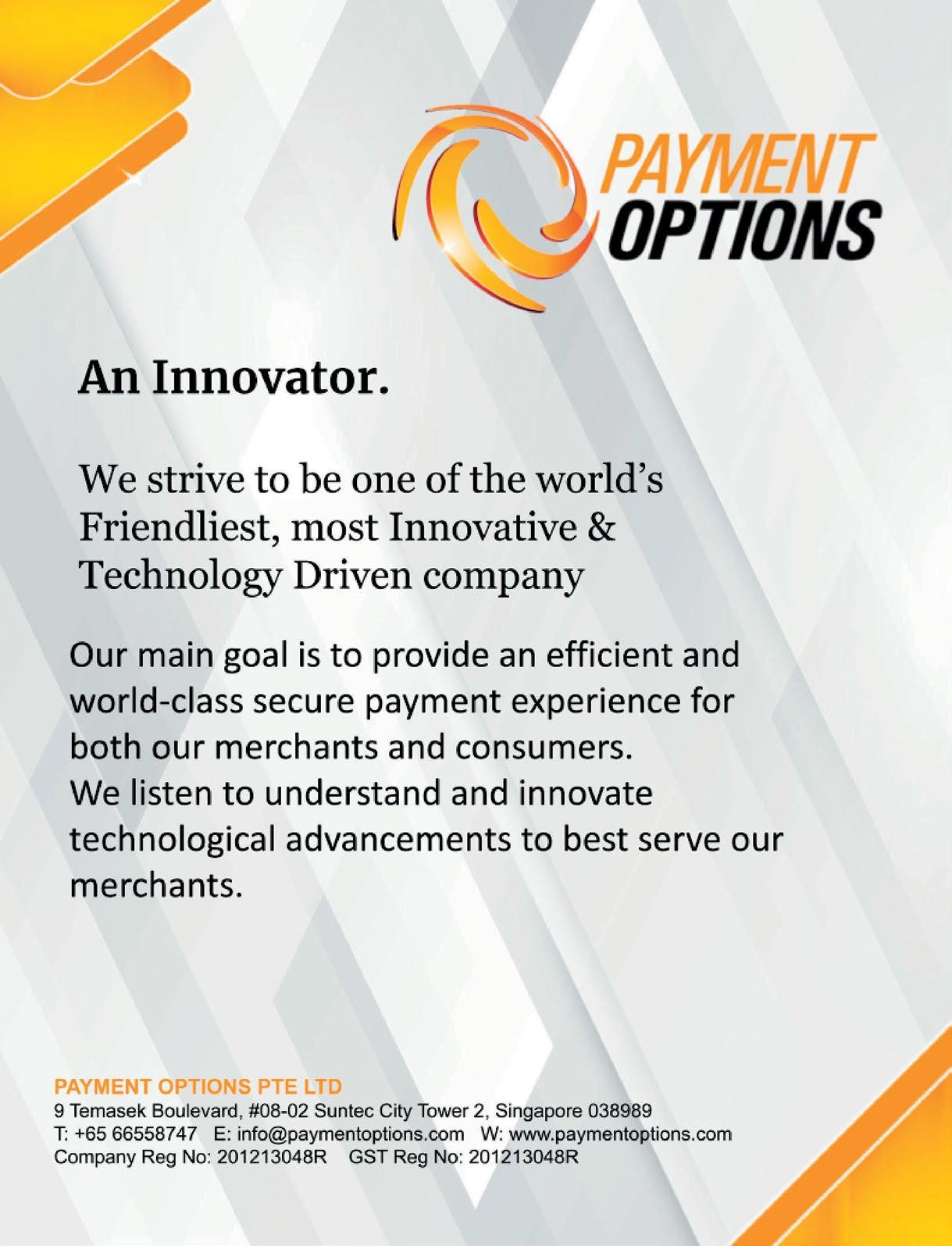
Lawyer turnover pushes firms to reassess retention strategies

Some firms are now offering flexibility to their staff to work remotely for 20% to 50% of their time.
Singapore’s legal industry, similar to that in the US and UK, was hit by the great resignation wave. Many of these lawyers have either moved to other firms or taken in-house positions, resulting in a shortage of mid-level lawyers with four to seven years of Post-Qualified Experience (PQE). These lawyers are considered valuable as they are experienced enough to run client matters effectively but are not yet too expensive to compensate.
“Their departure created a vacuum in the succession plans for several law firms,” said Dentons Rodyk’s Senior Partner and Chief Operating Officer Loh Kia Meng in an interview with Singapore Business Review.

To fill the gap left by the mass resignation wave, Loh said many firms began offering flexibility for lawyers and staff to work remotely for 20% to 50% of their time.
“Many lawyers now see hybrid work as a prerequisite when searching for jobs,” Loh shared.
At Dentons Rodyk, hybrid work has become a permanent feature.
“Many are liking this arrangement. In order to preserve our firm culture of familial cohesion and camaraderie, the firm created many more bonding
activities to encourage engagement socially outside the office,” Loh said.
Like Dentons Rodyk, law firm HFW Singapore also faced challenges on the workforce front, adding that the aggressive moves by the US firms to buy up talent at high salaries have left them looking at how they can attract and retain staff.
“We do that by ensuring that we have a welcoming office culture allied with top quality legal work in market-leading teams with high levels of client contact, a clear career path, and appropriate regard for work-life balance,” HFW Singapore Managing Partner, John Forrester, told Singapore Business Review.
Dealing with a new challenge
Whilst there were still lawyers who left their respective firms, Loh believes that the wave of resignations has slowed down and that the legal workforce has begun to stabilise.
Loh added that new hires in early 2022 have stayed in their jobs.
“[The workforce] definitely grew stronger. New hires had to get up to speed on the work left behind by the lawyers they are meant to replace. The new hires also had to adapt quickly to a new environment,”
Loh said. “Lawyers who stayed had to cover the work and roles of colleagues who left, until new hires were up to speed on things. Most have done a tremendously good job. Overall, the workforce has become more resilient coming out of this phenomenon,” the legal expert said. After the slowing of resignations, firms are now faced with the challenge of returning to normal-like working conditions.
To manage the return to work, Forrester said HFW Singapore has taken a different approach to its office working practices, by moving to fully agile working and adopting a full hot-desking model with a mix of cellular offices and open-plan desks.
According to WeWork, hotdesking is an “organisational workspace system in which desks are used by different people at different times, on an ad hoc basis.”
Forrester said the new setup, particularly the open plan areas, works well for the firm.
“[The open plan areas] are popular and invariably have a mix of partners, associates, trainees and secretaries all sitting with each other. At times, secretaries may also choose to sit in one of the offices. It is truly flexible,” Forrester said.
Navigating clients
After years of rebalancing, law firms will enter the new year with a focus on navigating clients through what comes next for the future.
Amongst areas that law firms are trying to navigate is the technology industry, including sectors that are steeped in it like financial services, life sciences, healthcare, and aviation.

According to Joo Khin Ng, Morgan Lewis’ Office Managing Partner in Singapore, these sectors will “likely continue to see activity as well as legislative updates as regulators keep pace with developments, particularly around data privacy.”
“The metaverse is one such example where Singapore, like many other countries, is looking to address implications, particularly in the financial services space. In the next five to 10 years, it is possible we will see ‘real-world’ regulation being sought to be replicated in the virtual metaverse space,” Joo said.
32 SINGAPORE BUSINESS REVIEW | Q1 2023 INDUSTRY INSIGHT: LEGAL
Amongst areas that law firms are navigating is the tech industry and sectors that are steeped in it like financial services, healthcare, and aviation
Many lawyers now see hybrid work as a prerequisite when searching for jobs
Loh Kia Meng
John Forrester
INDUSTRY INSIGHT: LEGAL
Notes:
• The following firms opted out for this year’s rankings: Clifford Chance, Baker Mckenzie, Latham & Watkins LLP. These three firms were part of the previous rankings.”
• (*) Infromation based on the firm’s website
• Employee count is based on the number of legal professionals in each firm as of 30 September 2022.
SINGAPORE BUSINESS REVIEW | Q1 2023 33 2022 Rankings LAW FIRM 2021 Rankings Foreign/Local 2021 Legal Professionals 2022 Legal Professionals Managing Partner 1 Allen & Gledhill 1 LOCAL 432 436 JERRY KOH 2 Rajah & Tann Singapore LLP 2 LOCAL 390 380 PATRICK ANG 3 WongPartnership LLP 3 LOCAL 330 375 NG WAI KING 4 Drew & Napier LLC 4 LOCAL 319 331 CAVINDER BULL, S.C. CEO 5 Dentons Rodyk & Davidson LLP 5 LOCAL 204 199 GERALD SINGHAM GLOBAL VICE CHAIR & ASEAN CEO 6 Shook Lin & Bok LLP 6 LOCAL 127 138 SARJIT SINGH GILL, S.C. 7 Withers KhattarWong 8 LOCAL 101 128 DEBORAH BARKER S.C. 8 Linklaters 7 FOREIGN 112 127* JONATHAN HORAN * 9 Lee & Lee 11 LOCAL 90 91 KWA KIM LI 10 Allen and Overy 12 FOREIGN 88 76* TIM BEECH & GAUTAM NARASIMHAN JOINT MANAGING PARTNERS* 11 Harry Elias Partnership 13 LOCAL 82 70 PHILIP FONG 12 TSMP Law Corporation 14 LOCAL 70 69 THIO SHEN YI, S.C. & STEFANIE YUEN THIO JOINT MANAGING PARTNERS 13 Norton Rose Fullbright 15 FOREIGN 54 59 YU-EN ONG 14 Herbert Smith Freehills 18 FOREIGN 43 58 FATIM JUMABHOY 15 Bird & Bird ATMD LLP 16 LOCAL 50 52 LORRAINE TAY AND SANDRA SEAH JOINT MANAGING PARTNERS 16 RHT Law Asia (RHTLaw Taylor Wessing LLP renamed in 2020) 9 LOCAL 99 51 AZMAN JAAFAR 17 CNPLaw LLP 21 LOCAL 37 44 LISA THENG 18 HFW 19 FOREIGN 41 42 JOHN FORRESTER 19 Tan Peng Chin LLC 20 LOCAL 40 40 WONG LIANG KOK & LIM JO SEE JOINT MANAGING PARTNERS 20 Tan Kok Quan Partnership 22 LOCAL 36 31 MARINA CHIN, S.C. & EDDEE NG JOINT MANAGING PARTNERS 21 Morgan Lewis Stamford LLC 23 LOCAL 28 29 JOO KHIN NG 22 Kelvin Chia Partnership 24 LOCAL 21 24* KELVIN CHIA* TOTAL 2,794 2,850
LEGAL LUMINARIES
30 most influential lawyers under 40



Amongst the awardees is the youngest fellow of the International Academy of Family Lawyers in Singapore.
Singapore’s roster of exceptional lawyers and rich tapestry of laws have allowed it to keep its crown as a preferred legal hub by businesses and high-profile individuals locally and worldwide.
Singapore Business Review recognises 30 young lawyers who have raised the bar for legal professionals across all fields. Lawyers on the list advised their clients on matters such as mergers and acquisitions, venture capital investments, IPOs, capital markets, international trade, and even new areas like blockchain. The awardees also served clients, like OCBC Bank, Bank of America, Jurong Part, Industrial and Commercial Bank of China (ICBC), KPMG LLP, San Miguel Corporation, and the Independent State of Papua New Guinea. Meet this year’s awardees, from the youngest to oldest:
Theodore is an associate specialising in international arbitration and commercial litigation. He has acted in matters arising from complex technology and blockchain-related disputes, recently obtaining a first-of-its-kind worldwide proprietary injunction to freeze a non-fungible token (NFT) on the blockchain. Theodore is representing more than 100 international claimants with aggregate losses of approximately US$130m in a class action arbitration. He also regularly publishes articles and books offering guidance and insight for industries and legal practitioners.


Working with the Dispute Resolution Department since 2016, Nanthini has acted as lead and assisting counsel in a variety of complex corporate and commercial disputes, focusing on shareholder disputes. She has defended Peter Tan Shou Yi in a $2.8b claim by Prudential whilst also taking pro bono matters in the Criminal Legal Aid Scheme. Nanthini also represented the Singapore Management University in several mooting competitions including the Philip C. Jessup International Law Moot Court Competition, where her team won the 2015 Singapore National Rounds.

Having advised and represented local and foreign clients, Kevin has worked on a myriad of matters such as disputes in the corporate and shareholders, commercial, and employment fields/areas/ space. Active in the dispute resolution scene in Singapore, he is currently also representing a multinational insurance company in an arbitration relating to insurance distribution in the ASEAN region and defending KPMG LLP against a claim brought by liquidators. Amongst organisations that Kevin is a member of is the Young Members Group of the Chartered Institute of Arbitrators Singapore.
Handling cases on employment law, investigations and white-collar crime, Cathy has advised her clients on sensitive matters such as high-level hiring and firing, investigating sexual harassment and cyber breaches, as well as restructuring and share options. Cathy has also regularly acted pro bono for clients in criminal matters and legal clinics, keeping migrant workers’ rights protected. Her recent high-profile cases include Singlife and Aviva’s record-breaking $3.2b merger, as well as the MAS’s investigation into the Noble Group.
Sharing her expertise on risk management at the stage of contract drafting, prearbitration/dispute resolution strategy and guidance, acting for parties in various market conditions, and providing full-service dispute management, Sadhvi Mohindru has made her mark by leading and determining strategy in the matters she handles. At HFW, Sadhvi has represented a varied range of prominent marine offshore contractors in high-value disputes within the upstream sector, including floating storage and offloading (FSO) and floating production storage and offloading (FPSO) owners.
Nicholas works with a wide range of clientele across multiple industries thanks to his specialty in employment laws, making him highly sought after for advice and representation on an array of both contentious and non-contentious matters. He has acted for listed companies in high-stakes shareholder disputes, and was part of the team who represented Perennial’s subsidiaries in The Capitol Singapore project, resolving the deadlock that was preventing the completion of the integrated development. He has also advised migrant workers on salary-related claims amongst others.
34 SINGAPORE BUSINESS REVIEW | Q1 2023
1 Theodore Ang, MSIArb, 30 Withers KhattarWong LLP
2 Nanthini Vijayakumar, 30 TSMP Law Corporation
3 Kevin Elbert, 31 TSMP Law Corporation
5 Sadhvi Mohindru, 32 HFW
6 Nicholas Ngo, 32 TSMP Law Corporation
4 Cathy Pereira, 31 TSMP Law Corporation
LEGAL LUMINARIES
Working with both publicly-listed and private companies in their mergers and acquisitions, private equity, and venture capital investments, among other things, Seraphina has distinguished herself in advising companies such as Evercore Asia (Singapore) Pte. Ltd. and OCBC Bank in their corporate transactions and Singapore and Jakarta-listed PT Berlian Laju Tanker Tbk in the US$2b restructuring of its debt and equity. Other companies she has advised inclue StarHub, Morgan Stanley Private Equity Asia, Chesham Properties, CVC Capital Partners, and WBL Corporation Limited. Her other areas of expertise are in general corporate law, employment law, and corporate governance issues.
Working in the Family and Divorce practice group of Harry Elias Partnership LLP, Clement’s role as an Of counsel has him handle cases related to contested matrimonial litigation such as custody and division of matrimonial assets. He has acted as lead counsel in the Family Justice Court, Supreme Court, and Syariah Court. His involvement in notable decisions such as VIG v VIH [2020] SGHCF 16 and UTL v UTM [2019] SGHCF 10 has distinguished him, alongside his work in the National University of Singapore’s Faculty of Law. Clement also co-authored the commentary for the Family Justice Act 2014 for LexisNexis’ Annotated Laws of Singapore series.
As a key member of TSMP’s corporate transactional team, Leon advises on IPOs, equity capital markets and M&A and investments transactions. He is a trusted adviser to listed companies spanning the TMT, manufacturing, healthcare and O&G industries, among others. He is currently advising the reconstituted board of Axington Inc in an RTO transaction and was part of the TSMP team that acted for Jurong Port in its acquisition of collapsed oil trader Hin Leong’s stake in a major oil storage terminal. Leon has also shared his legal knowledge outside the court, serving as guest panellist in a SS&C Intralinks webinar and a guest lecturer for the NAFA and Royal College of Music London.

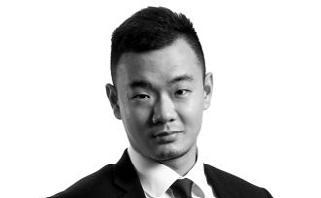
As a senior associate in the Private Client and Tax Division, Hon Yong Sheng offers his clients his expertise as a trusted and “to-go-to” private client and wealth advisor, specialising in trust, tax and estate planning, family governance, and all other areas of Singapore taxation. He is consistently involved with some of the most high-profile and significant matters in the private wealth, tax and family office space with many of his clients listed on various Forbes rich lists. He has also worked with key industry players such as the Monetary Authority of Singapore (MAS), the Singapore Economic Development Board (EDB) and the Inland Revenue Authority of Singapore (IRAS).


Charles’ expertise on commercial disputes and contractual claims has him advising and acting for clients in real estate management, handling issues such as defects liability, leasehold agreements, and debt recovery, as well as insolvency proceedings for banks. He has successfully acted as lead counsel in an adjudication under the Building and Construction Industry Security of Payment Act and defended a commercial landlord at trial and on appeal against a claim for wrongful termination of lease. He is a member of the Law Society of Singapore and Singapore Academy of Law and was admitted as an Advocate and Solicitor of the Supreme Court of Singapore in 2015.
Working in aviation finance and leasing in Singapore for the past eight years, Ami Brett has advised on deals such as ICBC’s US$1b portfolio financing facility arranged by Goldman Sachs and Avolon’s six-aircraft portfolio acquisition and related financings. As HFW’s Aerospace Diversity and Inclusion (D&I) representative, Ami has hosted multiple women in aviation events, including moderating a discussion on D&I issues in the industry with clients, colleagues and members from the International Aviation Womens Association. Her integral role in developing aviation finance practices in Asia has distinguished her along with her work in the global aviation community.


SINGAPORE BUSINESS REVIEW | Q1 2023 35
7 Seraphina Ho, 32 Drew & Napier LLC
8 Clement Yap, 32 Harry Elias Partnership LLP
9 Leon Lim, 33 TSMP Law Corporation
10 Hon Yong Sheng, 33 Withers KhattarWong LLP
11 Charles Ho, 33 Harry Elias Partnership LLP
12 Ami Brett, 34 HFW
Keith’s work as a director for Tax and Private Client Services at Drew & Napier has him handling both contentious and non-contentious matters, such as acting for a global bank on transfer pricing and deductibility issues and advising on tax implications of a divestment by a joint venture of one of the largest retail malls in Singapore. He has also acted for a multinational company in an appeal to the Income Tax Board of Review concerning the taxability of gains arising from the sale and lease-back of a development on JTC owned land. As a stellar student back at the National University of Singapore, he has continuously honed and expanded his tax litigation practice.
Specialising in corporate restructuring & workouts as a director of the Corporate & Finance department in Drew & Napier, Teri has handled many high-value cases such as advising Pacific Andes and its subsidiaries in its US$2.5b debt restructuring, as well as Bumi Resources and its subsidiaries in its US$5.23b debt restructuring. Her volunteer work in empowering women in the legal profession and guiding future generations of lawyers have set her apart from her peers. Teri also played a key role in the industry during the pandemic as an assessor under the COVID-19 Act, helping resolve disputes arising from the application of the measure.
Huai Yuan is partner in the firm’s litigation, dispute resolution and arbitration practice group in Singapore and business development lead for Vietnam and Thailand. His legal prowess as a well-regarded practitioner has brought him to act as counsel in all levels of court and arbitration proceedings, representing clients in high profile, complex, and landmark matters as lead counsel, influencing the development of Singapore law and Singapore’s legal industry in general. He was also involved in several landmark judgments while working in the Singapore Supreme Court as a Justices’ Law Clerk, which is a job given only to top law graduates.



As an Of counsel in the Family and Divorce practice group of Harry Elias Partnership LLP, Minjoo has handled cases in areas of matrimonial law such as contentious divorces, child custody disputes, and division of matrimonial assets, amongst other matters.
As a recognised rising star in a Singapore Family and Divorce Leading Lawyers guide for 2022, Minjoo has shared her expertise on the Family Law in Singapore with the Korean Association of Singapore and its members.
As a course facilitator for the Family Law Prace module at the Singapore Institute of Legal Education, she teaches family and matrimonial law to students seeking admission to the Singapore Bar.


As a director at Drew & Napier whose expertise is on banking and financial sector disputes, and both civil and criminal fraud, Terence has regularly acted as lead counsel or co-counsel in a wide range of commercial and criminal disputes, including both litigation and arbitration. Being a recommended lawyer by a leading legal publication, his clients have regularly recognised his ability to blend both legal expertise and commercial sensitivity into his advice, and to manage complex disputes in a calm, patient and professional manner. Amongst his career highlights include defending Citibank Singapore Limited against claims of fraudulent misrepresentation and negligence for FX and gold trading losses.
Being the youngest out of the 13 fellows of the International Academy of Family Lawyers in Singapore, Shu Mei provides lasting legal solutions for her high net worth clients, running a unique international private client practice that is collaborative in nature. She has successfully acted for clients as advocate at all levels of the Singapore Courts, mediation, and negotiations to achieve client-centric outcomes, and distinguished herself with her heavy involvement in the legal reform of family law in Singapore. Shu Mei is also an accredited mediator and Collaborative Family Practitioner by the Singapore Mediation Centre, and serves as an adjudicator in the same non-profit organisation.

36 SINGAPORE BUSINESS REVIEW | Q1 2023 LEGAL LUMINARIES
13 Keith Lam, 34 Drew & Napier LLC
14 Teri Cheng Yu Ning, 34 Drew & Napier LLC
15 Chia Huai Yuan, 34 Dentons Rodyk
16 Minjoo Yoon, 34 Harry Elias Partnership LLP
17 Terence Tan, 35 Drew & Napier LLC
18 Hoon Shu Mei, 35 Drew & Napier LLC
Alexander specialises in complex commercial litigation and corporate advisory work. He also maintains active practices in the fields of employment & labour law as well as credit, security, restructuring and insolvency law. He has been an associate member of INSOL International and the Insolvency Practitioner’s Association of Singapore. As an all-rounded individual possessing commercial and business acumen, his notable briefs include acting for a German insolvency administrator in a matter involving complex and novel matters of insolvency law and the Bank of America in connection with restructuring and ancillary relief applications sought by the multi-billion dollar Pacific Andes group in Singapore.
Yong Hong is an equity partner in the firm’s Shipping and International Trade practice. He has acted in high-value claims for major commodities traders, shipping companies, as well as international banks in all levels of the Singapore Courts and in international arbitrations. Recent highlights include acting for ICBC Leasing in SICC proceedings to claim damages of US$32 million for breaches of letters of support issued relating to financing provided to Otto Marine Ltd. He also recently acted for a Vietnamese state-owned-enterprise both in Singapore Court proceedings and London Court of International Arbitration to defend claims of US$30 million.




Benjamin has acted for investment banks, private banks, insurance companies, and other financial institutions, using his experience as a corporate transactional lawyer to distinguish himself as a recognised financial services regulatory and derivatives specialist, including acting for one of Singapore’s fastest growing buy-now-paylater start-ups on its PS Act licensing and regulatory matters. He recently earned his spot in a leading legal publication as a next-generation lawyer for Capital Markets: Structured Finance, Derivatives and Securitisation. In 2019, he completed a specialist secondment programme organised by the Ministry of Law and the EDB.
Jess’ work as a partner in the Banking and Finance practice has led her to cover a broad range of maritime transactional matters, advising local and foreign banks as well as institutional lenders in domestic and crossborder financing. Her area of expertise also includes advising clients, both local and international in connection with multijurisdictional sale and purchase transactions as well as newbuilding finance. She is also familiar with the ship registration and mortgage registration requirements for various jurisdictions, and has advised clients with business interest in major Europe and Asian cities such as Genoa, London, Beijing, Jakarta, Hong Kong, Shanghai and Kuala Lumpur.
As a former Justices’ Law Clerk and Assistant Registrar of the Supreme Court of Singapore, Man Er’s stint as one of the youngest equity directors at Drew & Napier has her successfully representing clients in several litigations and international arbitration cases. She has distinguished herself with her ability to achieve favourable outcomes for clients in an efficient manner, such as striking out a multimillion-dollar claim brought by a foreign joint venture partner against a Singapore-listed company shortly after the claim was filed in the Singapore High Court. In addition, Man Er has assisted numerous clients to achieve good settlement outcomes at the early stages of their disputes.

Qualified to practise both Singapore and English law, Chor Zhi Chao and his experience in advising both lenders and corporates on the full gamut of financing transactions has brought him to act on numerous significant cross-border transactions involving multijurisdictional elements and complex security structures. Some of his achievements include advising the bookrunning mandated lead arrangers and a group of approximately 30 lenders on Mercuria Energy Group’s US$1.393 billion credit facilities and the mandated lead arrangers and lenders on $540 million facilities for the refinancing of the “Mercure Singapore on Stevens” and the “Novotel Singapore on Stevens” hotels.

SINGAPORE BUSINESS REVIEW | Q1 2023 37 LEGAL LUMINARIES
19 Alexander Pang, 37 Tan Peng Chin LLC
20 Ting Yong Hong, 37 Rajah & Tann Singapore LLP
21 Benjamin Liew, 37 Rajah & Tann Singapore LLP
22 Jess Yong, 37 Dentons Rodyk
23 Kong Man Er, 38 Drew & Napier LLC
24 Chor Zhi Chao, 38 Rajah & Tann Singapore LLP
Raelene’s expertise in commercial and corporate litigation with an emphasis on banking and financing disputes, and personal and corporate insolvency has exalted her from her peers since she started as a pupil in the firm back in 2008. She has been recognised as one of the world’s current rising stars in restructuring and insolvency, as well as part of the next generation of influential lawyers from the praise received from both peers and clients. Amongst her recent notable transactions in the past 12 months include acting on applications for recognition of foreign insolvency proceedings and foreign representatives under common law and the UNCITRAL Model Law on Cross-Border Insolvency.
Daniel’s expertise has seen him successfully handling cases that include complex disputes in construction, banking and finance, infrastructure projects, and corporate and commercial disputes. His methodical and insightful approach has found him acting for notable cases in international arbitration and multi-billion infrastructure/mining arbitrations, as well as earning an appointment as a member of the Inquiry Panel under the Legal Profession Act from the Chief Justice. Amongst notable matters which Daniel has acted on was a SIAC international arbitration concerning valuable mining concessions in Indonesia.The value of the dispute is estimated at US$500m to US$600m.
Working extensively with insureds, insurers, reinsurers, and brokers, Allister handles a wide variety of insurance and commercial disputes, boasting considerable experience with insurance-related disputes, whether it be litigation or arbitration. He has had a significant role in resolving cases wherein COVID-related business interruption has pushed businesses to file claims on their insurers, an instance where courts have had to assess if unforeseen interruptions such as the pandemic are grounds for pay-outs. In addition to being admitted to the Singapore Bar, he is also admitted to the Malaysian Bar and the English Bar. He is also the Honourary Secretary of Dementia Singapore.
Practicing in corporate and commercial litigation and international arbitration, Jared has handled complex contractual disputes, corporate and shareholder disputes, and employment law. He has appeared at all levels of the Singapore Courts and has had successful conduct of trials as lead counsel. Appointed as amicus curiae, he has assisted the High Court in a matter relating to the Protection of Harassment Act and has successfully acted for the Independent State of Papua New Guinea in ICSID investor-state arbitration. He also acted for the beneficiaries of one of the oldest family trusts in Singapore in a claim against the corporate trustee for mismanagement and improper distribution.
As a director in Drew & Napier’s acclaimed Dispute Resolution practice, Paras currently acts as an advocate and solicitor of the Supreme Court of Singapore and a certified Attorney of the State of New York. Paras is also a qualified Chartered Arbitrator and a fellow of CIArb and sits on the List of Arbitrators of the HKIAC, the Reserve Panel of the SIAC and the Panel of Arbitrators of the THAC. Focusing his practice on energy, digital assets, banking & finance and corporate investigations. He also handles a range of disputes relating to contracts, tort, civil fraud, trusts, tenancy, regulatory matters, information technology, and employment.


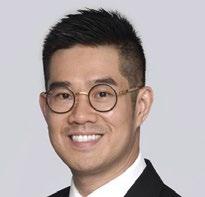
Clarence has over a decade of experience working with the world’s largest banks, asset managers, tech companies, pharmaceutical corporations and MNCs on employment and labour-related issues. As the firm’s first ever Singapore employment partner and head of its Singapore employment practice, he is one of the pre-eminent next-generation employment law practitioners in Singapore, and a trusted advisor to both General Counsel and C-suite executives alike. Clarence is a litigator by training and he continues to represent clients at all levels of the Singapore courts with considerable success. His expertise and acumen allows him to anticipate problems before they arise.



38 SINGAPORE BUSINESS REVIEW | Q1 2023 LEGAL LUMINARIES
30 Clarence Ding, 39 Simmons & Simmons
26 Daniel Cai, 38 Drew & Napier LLC
27 Allister Tan, 38 Drew & Napier LLC
28 Jared Chen, 38 Drew & Napier LLC
29 Paras Lalwani, 39 Drew & Napier LLC
25 Raelene Pereira, 38 Rajah & Tann Singapore LLP
Technology + People
Solving claims challenges through innovation and expertise.
For nearly a century, Crawford has led the industry through a relentless investment in people and the innovative tools that empower them. This unique combination enables us to provide unrivaled claims management solutions to insurance carriers, insurance brokers and corporations worldwide.

SINGAPORE BUSINESS REVIEW | Q1 2023 39
Learn more at www.crawco.com
Singapore Business Review’s Insurance Rankings sees slow growth amongst top 50
their financial situation, and 27% on their personal health. Respondents used mobile apps to monitor their health such as physical fitness, blood pressure and sleep, as well as their bank accounts, CPF and insurance needs,” Goh said.

This is why Prudential continues to improve its digital health and wellness app, Pulse. Apart from allowing users to assess their health through the Pulse app, it can also help them plan their finances with the use of its AI digital assistant.
Consumers also demanded more choices and expected tailored services to suit their individual needs. Prudential created products such as PRUActive LinkGuard, an investment-linked whole life insurance plan, that allows customers to adjust their coverage, and make regular or lump sum top-ups or partial withdrawals when needed.
Singapore’s top 50 insurers included in the Singapore Business Review’s Insurance Rankings grew by 5.1% in 2021, tapering off from the double-digit growth observed in the previous rankings. This is because in 2021, according to the Ministry of Trade and Industry, life insurers suffered a decrease of 23.5% in their net income brought by lower investment income.
The Singapore Business Review Insurance Rankings is the annual list of the top 50 insurers in Singapore by assets. The data is derived from the Monetary Authority of Singapore’s annual statistics with the most recent rankings using data from 2021 and comparing them from a year before.
The annual review of the insurance sector saw 20 life insurers, 24 general insurers, four life reinsurers, and two general reinsurers in the top 50 list. Great Eastern retained its first place, with a 4.35% increase in assets. AIA also maintained its rank at second place with a 1.72% increase in assets.
Prudential, NTUC Income, and Manulife all retained their third, fourth, and fifth spots, respectively, with Manulife experiencing the
greatest asset growth amongst the three at 18.51%. NTUC Income however decreased by 2.32% despite maintaining its fourth rank. Prudential’s assets increased by 7.84% compared to a year before.
Amongst all the general insurers, NTUC Income’s general insurance business has the highest assets in the rankings at number 13.
This year also saw the return of Singlife to the top 50 at rank 14 and a newcomer, EQ Insurance, at rank 50.
Meeting consumer demands
Speaking with Singapore Business Review, Goh Theng Kiat, Chief Customer Officer at Prudential Singapore, said that in 2022 they saw more consumers rely on technology for their health and well-being as well as financial stability. In their “Digital for 100: Harnessing technology for longer lifespans” research, they found that 54% of Singapore residents say that mobile devices and apps are critical tools in preparing for rising longevity.
“Of those who are using technology to manage their wellbeing, 36% say that digital tools have had the greatest positive impact on
For Manulife Singapore CEO Dr Khoo Kah Siang, 2022 saw the need for businesses to develop highly skilled and adaptable workforces and introduce more agile ways of working. Businesses must also find more ways to attract new talent and retain existing ones.

“At Manulife, we introduced an industry-first IBF-certified training programme to upskill our financial representatives and annual learning fiestas for employees to learn more about insurtech, blockchain, artificial intelligence and analytics. Such learning programmes serve to ensure our employees stay ahead of trends that are disrupting the insurance industry,” Dr Khoo said.

Reshifting focus
As the impact of the COVID-19 pandemic receded, Dr Khoo said that the focus shifted towards climate change and sustainability.
For businesses, this means creating products or strategies for a sustainable business, providing products with longevity, and contributing positively to climate sustainability. Manulife launched its own Impact Agenda in June last
40 SINGAPORE BUSINESS REVIEW | Q1 2023 INSURANCE RANKINGS
General insurers and life insurers dominate the latest Top 50 Insurance Rankings
The top 50 insurers saw 5.1% growth in 2021.
Digital tools have had the greatest positive impact on [consumers’] financial situation
Goh Theng Kiat
Khoo Kah Siang
year, which outlined its key social and environmental commitments, in areas where it can have the greatest ability to affect change.
Businesses also saw the value of personalisation and for Ho Lee Yen, CEO of HSBC Life Singapore, this will increase in 2023.
“This is the next evolution of “being where our customers are.” Organisations that are able to effectively leverage data and analytics to personalise their engagement and solutions will be able to capture mind and market share. In the insurance business, the level of personalisation we can achieve can make a difference in how effectively we can support our customers in reaching their goals in the various aspects of wellbeing,” the HSBC Life Singapore CEO said.
Trends for life insurers
Manogna Vangari, Insurance Analyst at GlobalData said that in 2022 some insurers increased their investments in insurtech to improve operational efficiencies and their overall profitability.

“For example, AIA implemented plans to shift 90% of its operations to the cloud by the end of 2022. Prudential Singapore is experimenting with machine learning-based solutions to automate claims and reduce fraudulent practices,” Vangari said.
She advised that insurers, especially life insurers, should focus on insurtech developments to address demographic challenges and provide personalised insurance policies to meet the changing financial demands of customers by offering more flexible insurance coverages.
“In 2023 and beyond, geopolitical tensions, cyber risks, supply chain disruptions caused by Russia and Ukraine conflict, sustainability, and ILS market development will become increasingly pertinent issues and key focus areas for the non-life insurers,” Vangari said.
Lim Siang Thnia, Deloitte Southeast Asia Insurance Sector Leader said insurers will face a volatile geopolitical environment in the current year.


“This will likely affect the investment outlook, particularly for life insurers, consumer behaviour and also employee expectations. Hence, insurers need to be agile
and adaptable to manage emerging challenges. Some of the value of the prior investments will likely be demonstrated (or not) in the coming year. In addition, adjusting to what is likely to be a hybrid working environment and the challenges it poses, whilst remaining competitive and customer-focused with an eye on the bottom line will be a balancing act that insurers need to manage.” the Deloitte expert said.
Targets for general insurers
Ho Kai Weng, Chief Executive of the General Insurance Association of Singapore (GIA) said they are several trends last year that may remain in 2023.
One of them is how workplace and manpower trends such as hybrid and remote working will remain.
“Insurers must adapt to the office of the future. A strategic approach to training and upskilling talent will be critical to ensure that insurers remain competitive in the global talent war,” Kai Weng said.


In Singapore, most senior executives have prioritised employee engagement and retention strategies over consumer behaviour or geopolitical concern. However, only 30% are prepared to respond to a dearth of talent and skills availability, a study by Russell Reynolds Associates revealed.
“The tech layoffs of late 2022 may create new opportunities for insurers to grow their ranks, something previously challenging given the shortage of tech talents. Insurers with particular requirements for new skills in technology can leverage the availability of skilled tech talent to
INSURANCE RANKINGS
support their digital transformation roadmaps,” Kai Weng advised.
General insurers should also expend efforts in providing cyber insurance to small and medium enterprises (SMEs). A report by QBE revealed that 42% of SMEs in Singapore have indicated that they conduct seven to eight processes online but lack basic protection for these technologies. 21% of SMEs have also said that they have been ‘hacked into’ at some stage back in 2019.
“This is worrying given that SMEs account for 99% of businesses in Singapore and employ more than 70% of the workforce. Any largescale cyberattack would potentially mean widespread losses. This, hence, underscores the urgency for insurers to step up efforts and educate businesses on the importance of cyber insurance,” Kai Weng said.
Kai Weng added that since the pandemic, greater awareness towards protection has been prevalent amongst consumers.
“At the back of an uncertain macroeconomic environment, sustained inflationary pressures, increasing sophistication of cyber threats, and climate change, there will no doubt be a new wave of challenges posed for insurers. Against this volatile landscape, there is a need to adjust operations accordingly to cope with the unknown as this could mean large and unexpected liabilities and the consequent increase in claims and costs. With this trend, therein exists an opportunity for insurers to innovate and deliver products with strong value propositions that meet these,” Kai Weng said.
SINGAPORE BUSINESS REVIEW | Q1 2023 41
In 2023 and beyond, geopolitical tensions, cyber risks, supply chain disruptions, and sustainability will become key focus areas for non-life insurers
Ho Lee Yen
Manogna Vangari
Lim Siang Thnia
Ho Kai Weng
INSURANCE RANKINGS
*Previously not on the top 50 lists
**Numbers derived from MAS data.

from last year’s rankings

42 SINGAPORE BUSINESS REVIEW | Q1 2023 2022 Rankings Insurance Company 2021 Rankings Classification 2021 Total Assets (SG$) 2020 total assets (SG$) 1 GREAT EASTERN LIFE 1 LIFE $72b $69b 2 AIA SPORE 2 LIFE $59b $58b 3 PRUDENTIAL 3 LIFE $55b $51b 4 NTUC INCOME 4 LIFE $43b $44B 5 MANULIFE 5 LIFE $32b $27b 6 TOKIO MARINE LIFE 8 LIFE $12b $11B 7 SINGAPORE LIFE 14 LIFE $11b $1b 8 HSBC INSURANCE 7 LIFE $11b $11b 9 AXA INSURANCE 9 LIFE $5b $5b 10 ETIQA PL 11 LIFE $4b $3b 11 TRANSAMERICA 10 LIFE $3b $3b 12 QUILTER INTERNATIONAL 12 LIFE $2b $2b 13 NTUC INCOME 13 GENERAL $1b $2b 14 SINGLIFE* - LIFE $1b15 FRIENDS PROVIDENT 16 LIFE $1b $1b 16 SWISS LIFE 15 LIFE $1b $1b 17 ST. JAMES'S PLACE 20 LIFE $1b $847m 18 MUNICH RE 17 LIFE/REINSURER $1b $924m 19 FIRST CAPITAL 18 GENERAL $949m $920m 20 ZURICH INTERNATIONAL 19 LIFE $919m $877m 21 CHINA TAIPING 22 LIFE $810m $550m 22 CHINA REINSURANCE 46 LIFE/REINSURER $746m $156m 23 SWISS RE ASIA 42 LIFE/REINSURER $645m $214m 24 AXA INSURANCE 23 GENERAL $573m $550m 25 MSIG 21 GENERAL $561m $592m 26 INDIA INTERNATIONAL 24 GENERAL $534m $542m 27 CHINA LIFE 26 LIFE $508m $510m 28 AIG ASIA 23 GENERAL $497m $528m 29 CHINA TAIPING 30 GENERAL $444m $386m 30 TOKIO MARINE INS 27 GENERAL $444m $448m 31 CHUBB INS 29 GENERAL $424m $404m 32 LIBERTY INSURANCE 28 GENERAL $424m $408m 33 LLOYD'S ASIA SCHEME 31 GENERAL $390m $350m 34 UTMOST WORLDWIDE 32 LIFE $373 $297m 35 GEG 33 GENERAL $314m $269m 36 CIGNA EUROPE 40 GENERAL $263m $191m 37 UOI 34 GENERAL $247m $238m 38 XL INS 36 GENERAL $230m $227m 39 SOMPO INS 37 GENERAL $227m $219m 40 QBE INS 35 GENERAL $225m $232m 41 ALLIED WORLD 38 GENERAL $207m $217m 42 FACTORY MUTUAL 42 GENERAL $194m $179m 43 RGA INTL 43 LIFE/REINSURER $192m $174m 44 ALLIANZ GLOBAL C&S 41 GENERAL $192m $185m 45 ETIQA PL 45 GENERAL $174m $161m 46 SINGAPORE RE 44 GENERAL/REINSURER $171m $173m 47 BERKSHIRE 49 GENERAL $148m $173m 48 LIBERTY SPECIALTY SINGAPORE 50 GENERAL $138m $129m 49 SWISS RE ASIA 39 GENERAL/REINSURER $137m $214m 50 EQ INS* - GENERAL $135mTOTAL $329b $313b 5.1%
increase
Terumo has worked to rapidly bring medical settings the advanced products. Because of our strong desire to contribute to the advancement of healthcare—not only in Japan, but throughout the world— we have taken on the challenges of a variety of clinical environment to now do business in over 160 countries


terumo-asiapacific.com
INSIGHT: REAL ESTATE
HDB sees price correction amidst record-high prices
Slow down in price growth may be felt by the fourth quarter of the year.
Singapore has not held back in imposing cooling measures to tame rising home prices, but in what seems to be the first time, the government implemented a new round that will zero in on the Housing and Development Board (HDB) resale market. This is expected to trigger a “knee-jerk reaction” from the public housing market, OrangeTee & Tie said.
In end-2021, Singapore increased the Additional Buyer’s Stamp Duty (ABSD) on private residential properties, leading to a decline in investment sales. This time the government tightened the Total Debt Serving Ratio (TDSR) and the Mortgage Servicing Ratio (MSR) as well as reduced the loan-to-value limits (LTV), which could impact housing affordability.
“This can be considered to be one of the most significant rounds of cooling measures imposed on the public housing market, and we can expect a stronger market reaction when compared to previous measures,” OrangeTee & Tie Pte Ltd. Senior Vice President of Research & Analytics Christine Sun told Singapore Business Review.

Sun also said that the industry already expected the cooling measures targeted on public housing
as prices of HDB resale flats have continued to climb in the past two years. In a report, OrangeTee noted there are observations the market may be “overheated” with flats being sold for a million dollars.
Why do prices for residential sale/ resale continue to rise, and at a much faster pace?
For the HDB resale market, prices continued to rise because there were construction delays for new flats during the pandemic. Many young couples who could not wait for the long completion period of new flats turned to the resale market. Moreover, many private homeowners have sold their homes over the past year as private resale prices have risen and many seek to cash out on their investments. They subsequently bought resale flats as their replacement homes. Therefore, the increase in demand pushed up the prices of HDB resale flats substantially.
For the private residential market, the price growth was mainly driven by a big increase in condo prices especially those in the suburbs. There was a spike in median prices of new condos last quarter, which rose about 18% to around $2,100 per square foot. More than 900 new homes were sold

for at least $2,000 psf in Q3 this year, 21 of which were above $2,400 psf.
What will the new round of cooling measures change?

The current round of cooling measures will have more impact on the public housing market especially since several measures are implemented such as the increase of interest rates used for the computation of the TDSR and the MSR and reduction of the LTV limits which will all affect the affordability of buyers since they will be allowed to borrow less and will use more cash to purchase a new home.
There will also be a 15-month waitout period for private homeowners purchasing HDB flats. This measure will impact the upper tier of the HDB resale market. By imposing the new ruling, some of these buyers who do not wish to wait for so long will likely turn back to the private market or purchase smaller resale flats. This may drive up demand for the private resale market. Private homeowners who still wish to purchase an HDB resale flat may need to rent a unit in the interim because of the 15-month wait-out period. The increased rental demand may push current rental prices even higher.
The tightening of TDSR may not have a significant impact on the private residential market as the adjustment has already been widely expected since interest rates have been climbing.
The impact is not likely to be as deep as the first round of TDSR as the adjustment is not big this time round. The luxury market may not be too affected since many high-net-worth individuals may not need to borrow or can redeploy funds from other investments to pay their home loans.
Tell us more about how the public housing market is expected to react. The cooling measures implemented in December 2021 were more targeted at the private residential market. As a result, HDB resale prices continued to rise especially after the lockdowns. With more people paying record prices across the island and more transactions crossing S$800,000 and above, some people may already be overstretching their finances when they purchased these flats.
44 SINGAPORE BUSINESS REVIEW | Q1 2023
INDUSTRY
Flat prices ‘overheat’ to one million
This is one of the most significant rounds of cooling measures imposed on the public housing market Christine Sun
10,000 CHANCES TO HELP SAVE A LIFE
Each year 10,000 sudden cardiac arrest events occur in the workplace.1 CPR plus early defibrillation can more than double survival rates.2
Make sure your employees are ready to respond with high-quality CPR and a best-in-class AED from ZOLL® with:


• Real-time CPR feedback: Real-time feedback technology guides rescuers on optimal rate and depth of chest compressions to ensure the delivery of high-quality CPR.
• Interactive features: Step-by-step instructions and corrective guidance support users throughout the rescue.

• Rescue Ready®: Automatic self-tests verify functionality of the device, pads, and battery to ensure it’s ready when needed.
With a ZOLL AED to support you throughout the rescue, you’ll be ready to help save a life.

SINGAPORE BUSINESS REVIEW | Q1 2023 45 Copyright © 2022 ZOLL Medical Corporation. All rights reserved. Rescue Ready and ZOLL are trademarks or registered trademarks of ZOLL Medical Corporation in the United States and/or other countries. All other trademarks are the property of their respective owners. MCN PP 2204 0674
1Occupational Health and Safety website, OSHA publication 3185, osha.gov/aed. Accessed 14 Apr 2022. 2Weisfeldt ML, et al. J Am Coll Cardiol. 2010 Apr 20;55(16): 1713–20. Download “AEDs in the Workplace: A Buyer’s Guide” zoll.com/sg/aeds4you
Three factors driving Singaporean firms to invest in Japan’s real estate

Local investors can get a 5%-6% annual yield when investing in Japanese properties. Japan is a market that, historically and currently, has very attractive and low-interest rates and low inflation

Back in February, when borders were still closed, Peter Young and his team invested in real estate assets in Japan. And whilst that time was full of uncertainties, he was confident and driven to invest in the country because of three factors: currency play, growing housing demand, and stability.
In 2022, the yen hit a 32-year low against the US dollar, primarily driven by interest rates.
“The [currency] is creating a lot of interest in investing in Japan, particularly in real estate. With a lot of the concerns in the market about interest rates and inflation, Japan is a market that, historically and currently, has very attractive and low-interest rates and low inflation,” Young, CEO and Co-founder of private equity investment firm, QIP, told Singapore Business Review.
“Japan has historically been an investment market where you arguably see stability over growth,” the QIP CEO added.
Young also said that Japan is amongst the three Asia-Pacific countries, alongside Singapore and Australia, that may benefit from the stabilisation of the volatile markets.
Currency play and stability, however, are not what is mainly driving interest in Japan, but rather the growing demand for housing in the country.
According to Young, the population is still growing in Japan, particularly in four cities: Tokyo, Osaka, Nagoya, and Fukuoka. This comes as a shock to most investors given that Japan has been known to have a shrinking population.
“Twenty years ago, the average household in Japan had 2.7 people in a single household. Now it’s 2.2,” Young said.
In Osaka, where QIP made its first series of investments, Young said it has seen a 1.5% growth in population.
Over the same period, Young said about eight million new households came into the market as more people needed to be in working locations in the four cities.
“There are jobs, people are moving into these cities, the urbanisation story of these four major cities is very much happening. More homes are being created, smaller households are being created,” Young said.
“Growing population in the urban cities and the growing needs
for housing are what is driving these big four major cities to be attractive investment locations in Japan,” he added.
Since investing in February, Young said QIP has seen “reasonable capital value appreciation.”
With a US$100m investment, Young said investors can look at a 5%-6% annual yield on the back of very low-interest rates in Japan.
“You can [also] look to secure early double-digit annual return, typically over a medium-term of about five years,” Young said.
“I think roughly a 6% yield return annually with a 10% internal rate of return or annual compounding return over a five to seven-year period; that is what we’re looking at in terms of our investment returns,” he added.
Looking ahead to the new year, the QIP CEO believes Japan will continue to be an attractive location for real estate investment.
“Many investors are still seeking stability and stable risk-adjusted growth as opposed to seeking opportunistic return so I think investors will continue to look at Japan,” Young said.
46 SINGAPORE BUSINESS REVIEW | Q1 2023
Growing population in the urban cities and the growing needs for housing drive these major Japanese cities to be attractive investment locations
INDUSTRY INSIGHT: REAL ESTATE
Peter Young







47
AKSHAY MENDON OPINION
One pass: A potential solution to Singapore’s leadership talent challenges
Singapore unveiled a new long-term work visa in late 2022. Singapore’s ONE Pass is targeted towards attracting specific senior-level talent — those with regular monthly salaries of at least S$30,000 ($US21,128). The extended 5-year duration of the ONE Pass will also be an excellent way for individuals and businesses to consider Singapore as a long-term option.
While tech continues to dominate the headlines in Singapore and globally, there are a few sectors in Singapore that have been experiencing massive growth.
Much of this growth transformation has come over the last three years and has resulted in huge demand for senior-level talent (C-level, vice presidents, general managers) across multiple job functions.
For companies in these sectors, the ONE Pass is a timely intervention to attract best-in-class senior talent to the local market.
Green is the colour of the season
The renewable energy sector has seen the most movement in the last two years with increasing dialogue around climate and energy transition globally. The downturn in the tech world has also meant growing interest from investors in this segment.
Several renewable energy platforms and independent power producers investing in wind and solar projects are ramping up their presence in the region.
Such platforms use Singapore as the control centre where the senior management is based, managing project launches across several ASEAN countries and Australia & New Zealand.
On the flip side, Singapore’s push for renewables with the Green Plan 2030, has spurred large local organisations operating in the areas of energy and infrastructure development to explore opportunities around sustainability and green hydrogen sourcing.
The sequence of events has resulted in high demand for senior professionals in the areas of green finance, investments, risk, legal, policy and partnerships, amongst others.
Organisations in the space are looking to hire CEOs, chief investment officers, legal counsels, chief risk officers, and policy leads who can help them navigate dealmaking in a complex regulatory and project financing landscape.
Mid-cap supply chain matters
Supply chain strategies have been turned on its head over the last three years, with the problem most acute within Mid-Cap companies across sectors.
Lacking a diversified supply chain framework as compared to their large-cap peers, mid-caps have always largely depended on a centralised strategy - reliant on manufacturing close to the HQ or a facility in China to supply.
China’s zero-COVID policy coupled with inflation and geopolitical
AKSHAY MENDON
Lead, Singapore
EMA Partners International
issues has only worsened regional supply chain challenges. These developments have prompted several mid-caps to embark on a near-shoring strategy with several companies setting up regional supply chain hubs in Singapore over the last year.
This development has opened a fresh demand for senior talent within the supply chain and manufacturing.
Several mid-cap organisations within medical devices, industrial automation and food manufacturing segments are looking for chief operating officers and chief supply chain officers who can help plug the gap. This being uncharted territory for most mid-caps, the need is for senior supply chain talent with the ability to create a regional playbook and drive results.
Regional hub reimagined
Singapore’s growing role as an international arbitration centre has meant a huge influx of Family Offices, choosing to set up base here. In addition, the country is becoming increasingly important as a hub for regulatory innovation in the region.
There have been numerous regulatory sandboxes across highgrowth sectors such as Healthcare, Fintech and now Renewable Energy being tested in the country before launching in other regional markets. A host of private equity, strategy consulting, public policy, and legal firms have well supported this eco-system.
The surge in family offices has meant demand for capable chief investment officers, legal counsel and CFOs.
Healthcare and fintech companies are looking to hire public policy leads, legal counsels, business development and customer experience heads as these companies look to strengthen their presence in the region. The last few years have seen senior talent in these functional areas move from Europe, the UK, and Australia, making Singapore their base.

Change being the only constant in Singapore’s talent ecosystem A clear theme appears when we analyse these trends – the surge and demand for talent in the above sectors have emerged in the last 24 to 36 months.
Change has been a constant feature of Singapore’s business ecosystem, with phases of evolution every 5 years. This means it is impossible for the country’s existing talent pool to completely satisfy the needs of the market. There is a need to continually plan and attract the best-in-class talent in certain categories for Singapore to maintain its edge as a regional hub.
The ONE Pass signals a concerted effort the island nation is making for its next stage of evolution – one where it strengthens its positioning as a strategic hub for international arbitration, energy transition, IP, finance, and healthcare. Exciting times are ahead.
48 SINGAPORE BUSINESS REVIEW | Q1 2023


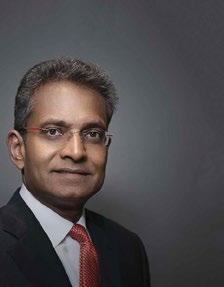



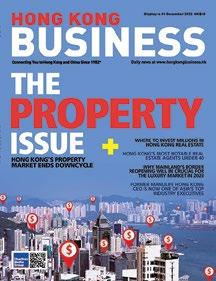



SINGAPORE BUSINESS REVIEW | Q1 2023 3 MEDIA PUBLISHER In Print, Online, Mobile, Events, Awards, and Research Issue No. 94 Asian Banking Finance Issue No. Singapore’s Best Selling Business Magazine Issue No.52 BUSINESS TO BUSINESS ASIA’S LEADING
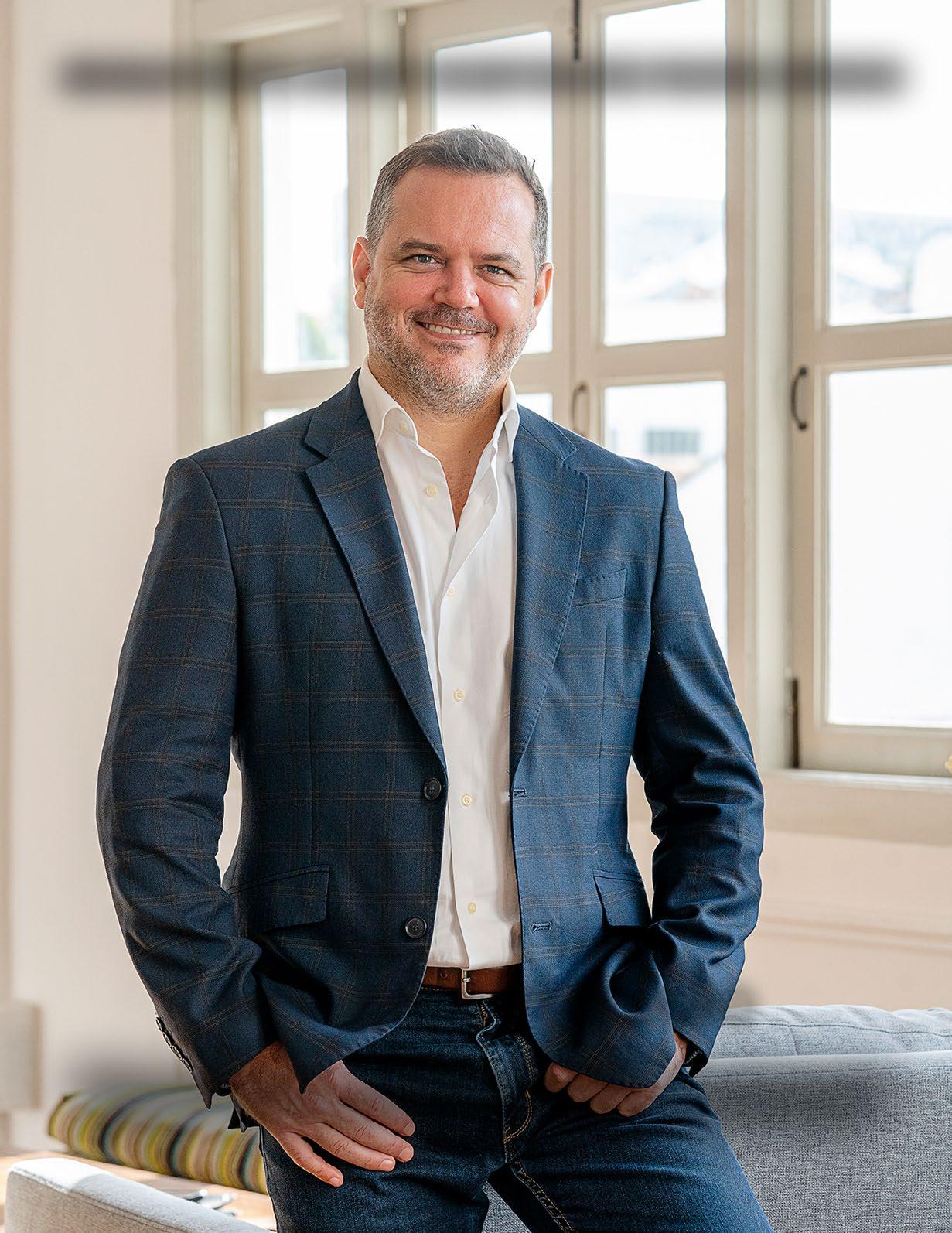


















 BY Michael Velten and Junwei Han
BY Michael Velten and Junwei Han











































































































































